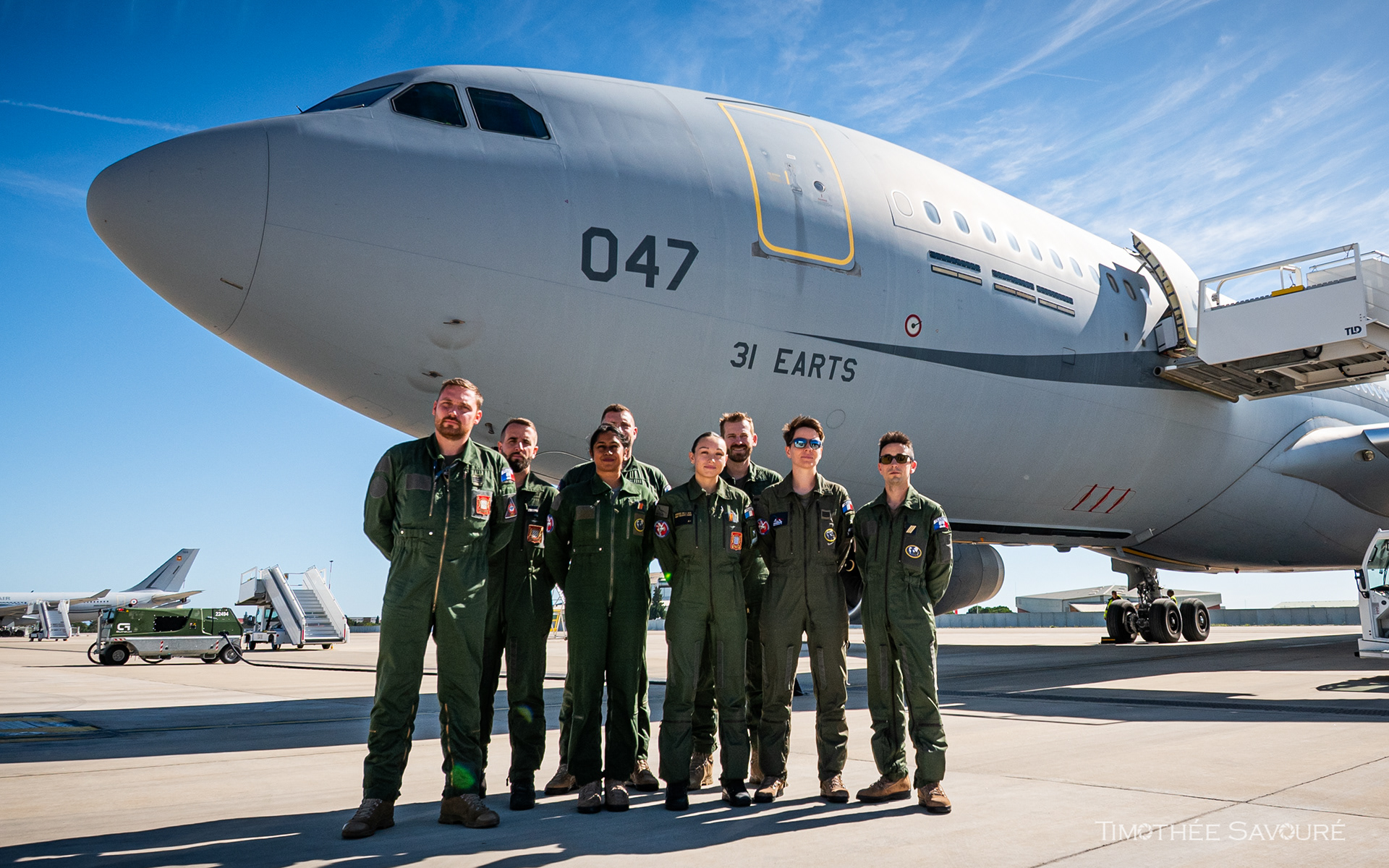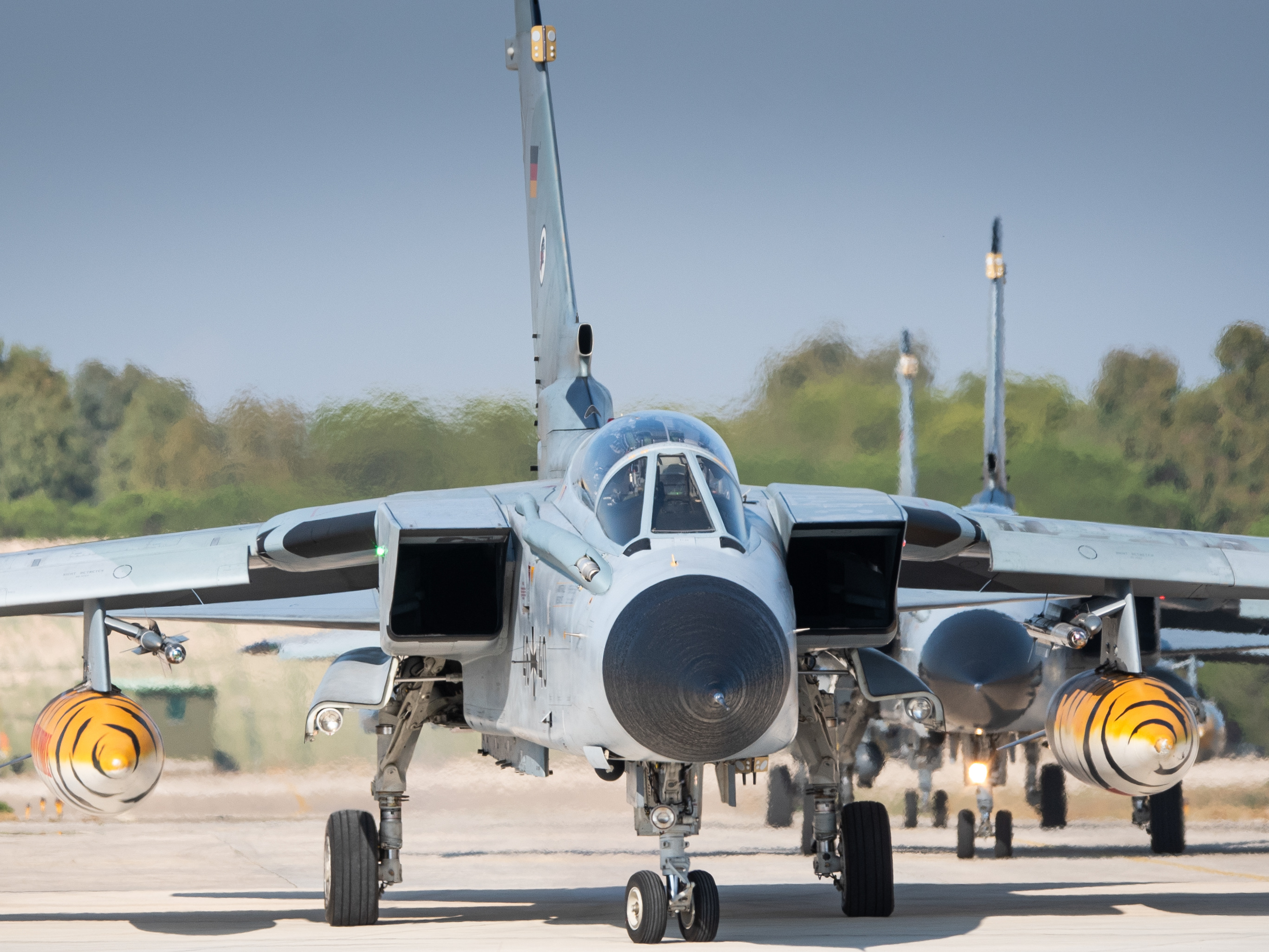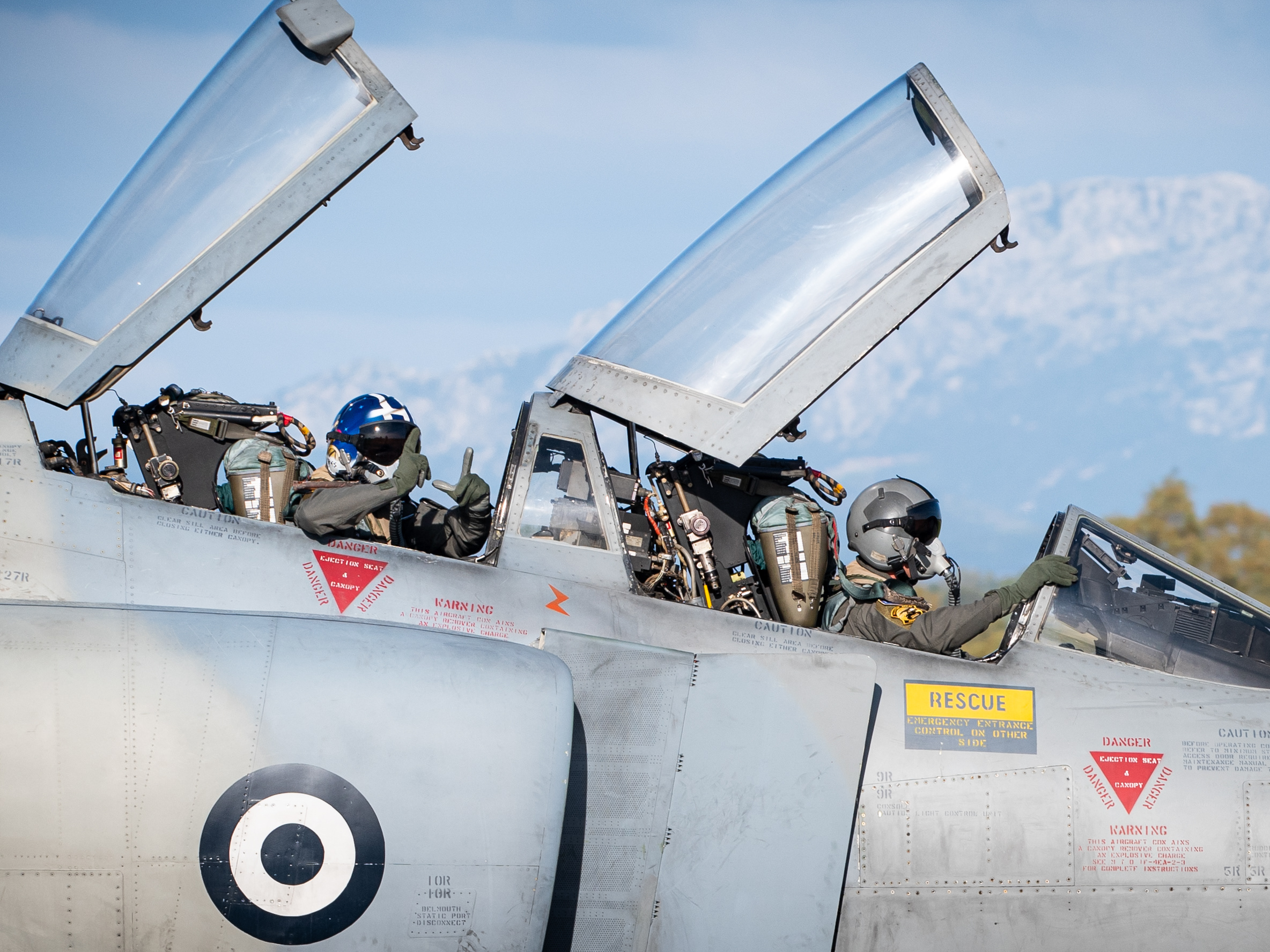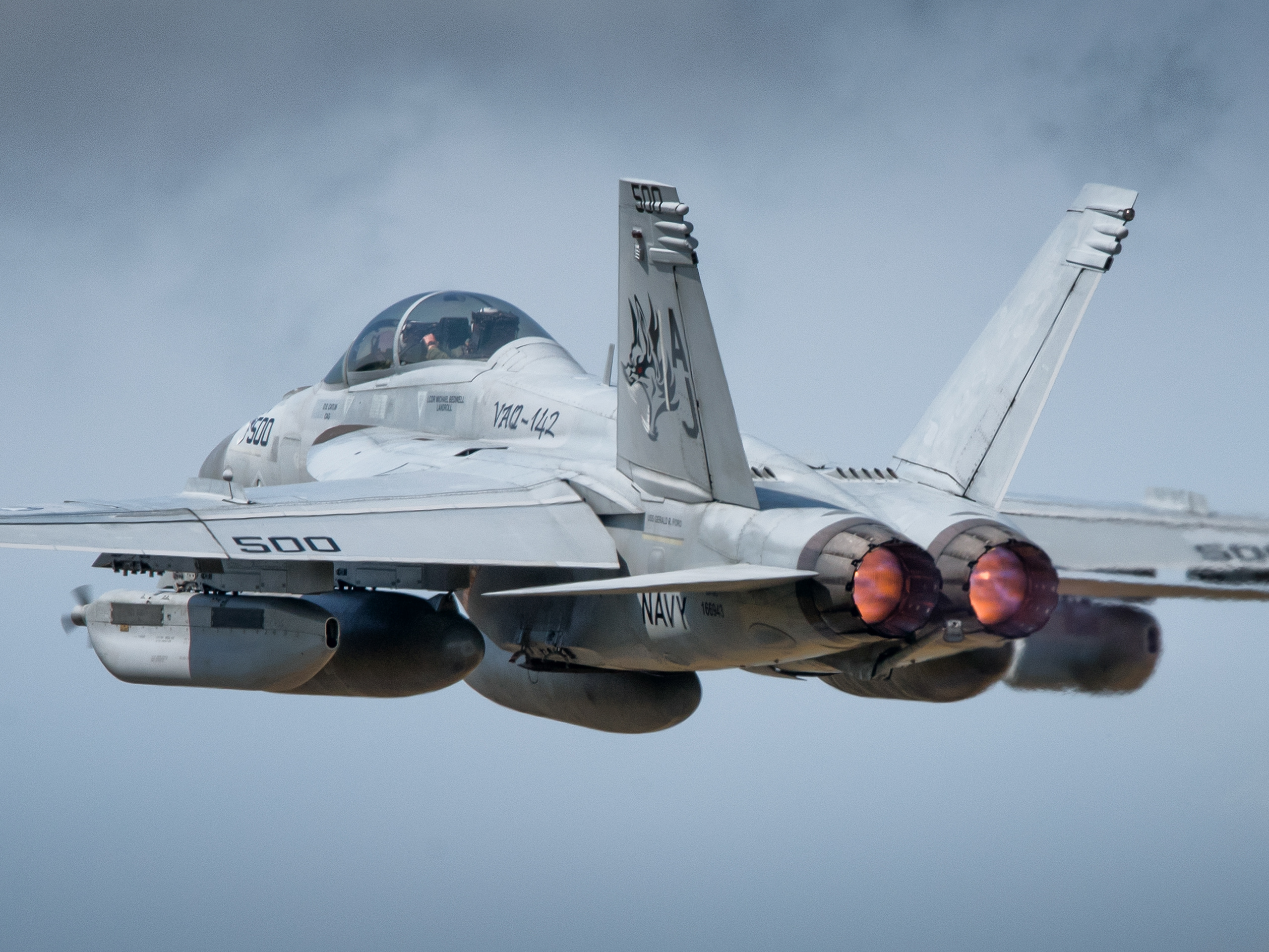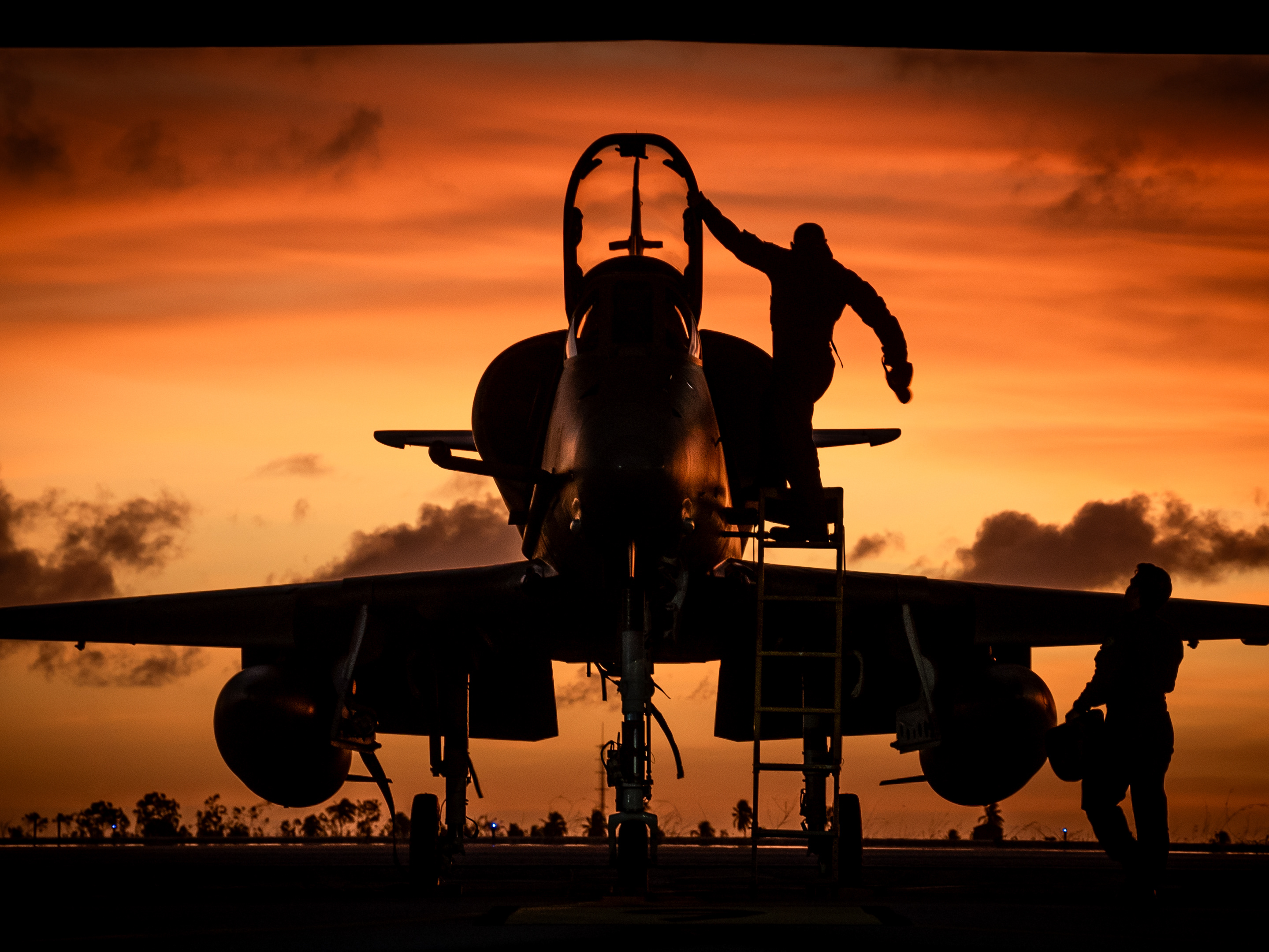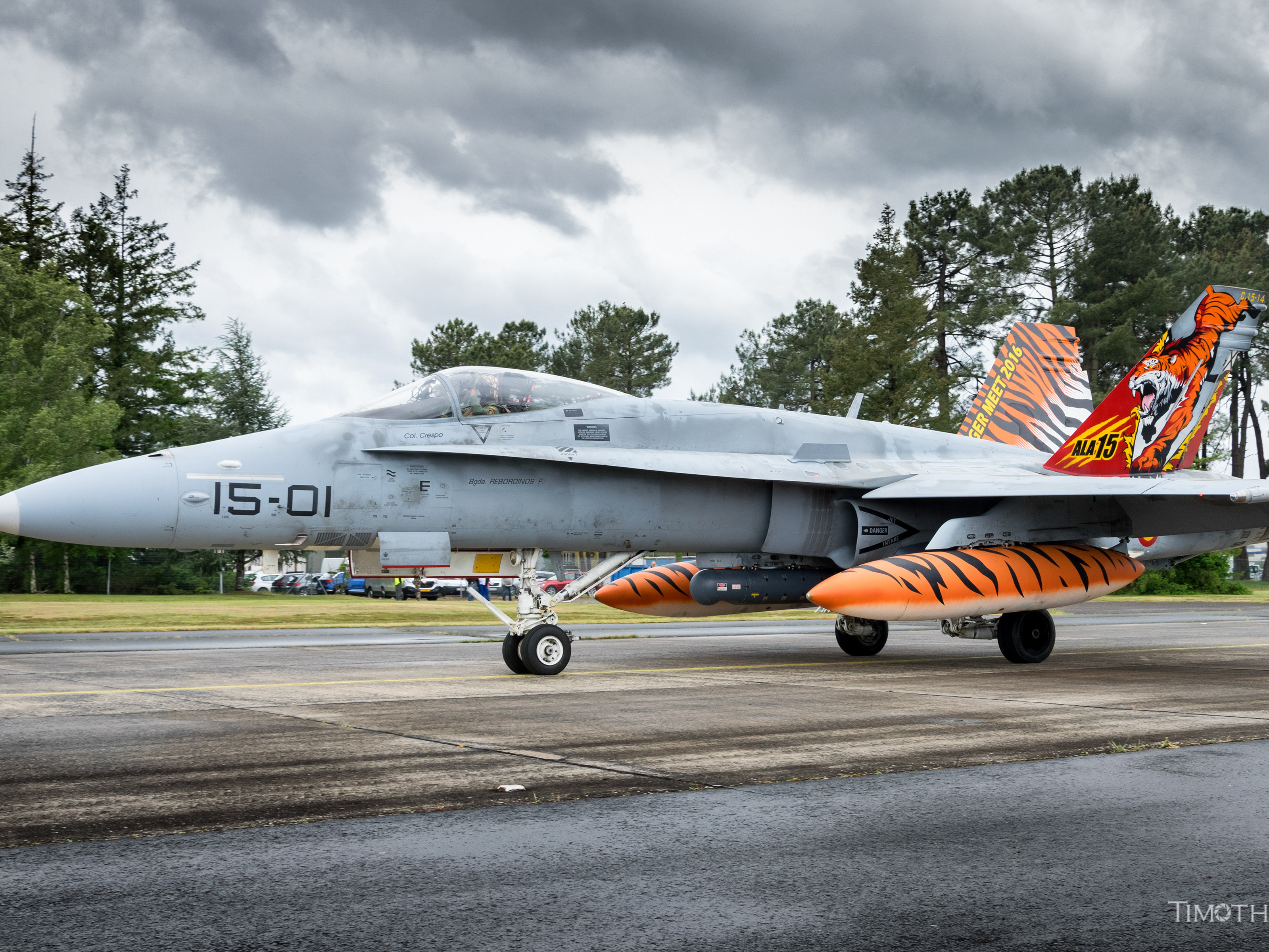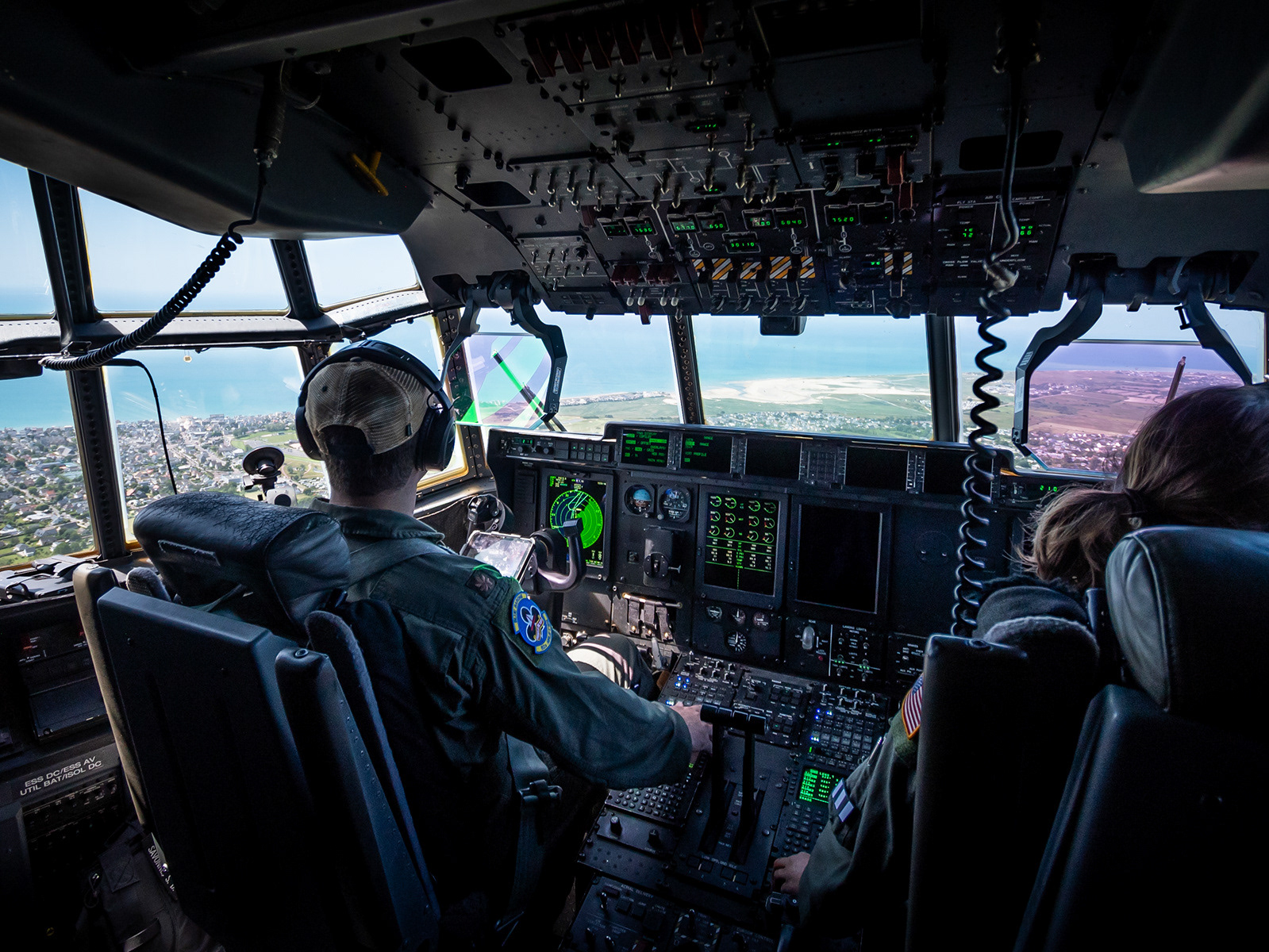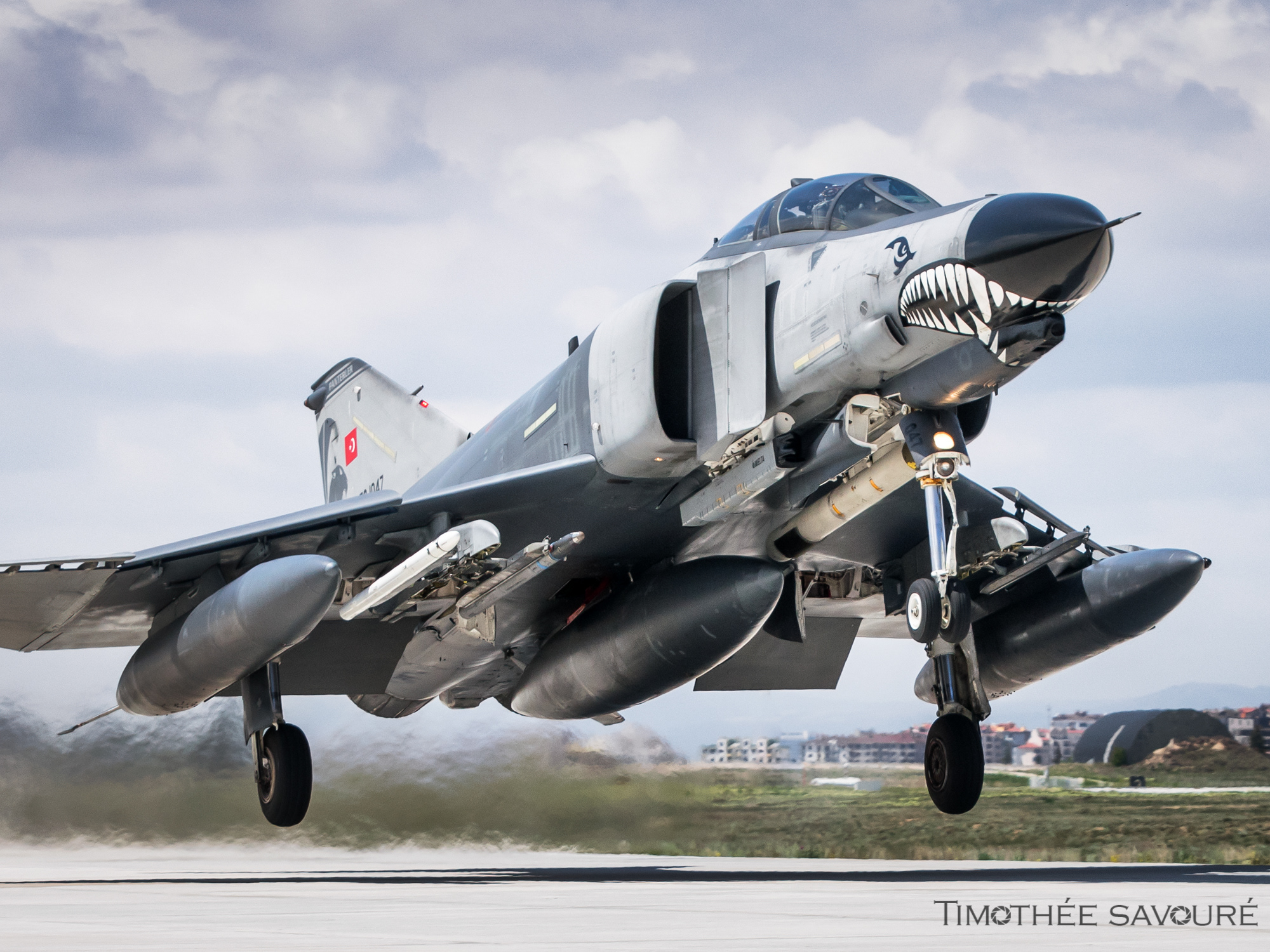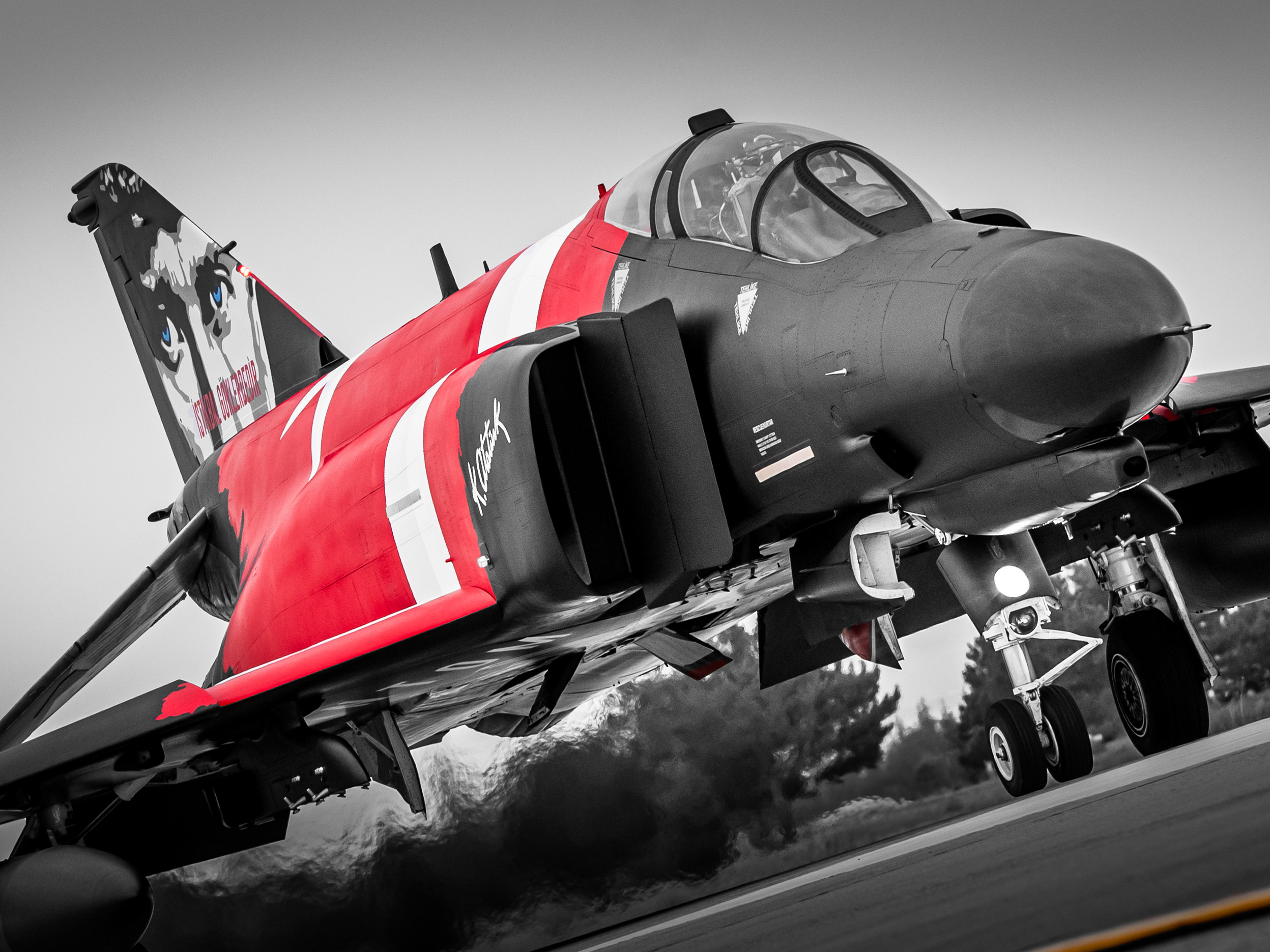Each autumn, the French Air and Space Force (AAE) stages its most important operational readiness event: VOLFA, a full-scale air warfare exercise that tests the limits of interoperability, endurance, and tactical realism. The 2025 edition, organized by the Air Defense and Air Operations Command (CDAOA), occured from 22 September to 10 October 2025 across France, bringing together more than 50 aircraft from 4 countries and 1,000 airmen. Jet Blast Area had the unique opportunity to board on one of the French Air Force's A330MRTT tankers during an air-to-air refueling flight on a VOLFA mission.
VOLFA 2025 Exercise
The first edition of VOLFA was held in 2014 in BA118 Mont-de-Marsan, Southwest of France, with the goal to prepare aircrews and defence operators for the operations of tomorrow. For some time, three VOLFA editions were held every year, before becoming an annual exercise from 2019.
Operating mainly from three key airbases (Mont-de-Marsan for fighters, Orléans-Bricy for tactical transports, and Cazaux for helicopters) VOLFA 2025 launches into action with high tempo. Over three weeks, mixed crews flew complex day and night raids in a high-intensity battlespace, with COMAO (COMbined Air Operations) and side missions, the kind of environment only a handful of nations truly master. To keep the scenario alive and realistic, the exercise derives directly from recent combat experience — on Europe’s borders and across the Near and Middle East. Every mission type is on the table: air superiority, reconnaissance, degraded-environment flying, rapid and agile force projection, and the protection of deployed assets. VOLFA 2025 is designed not just to train aircrews, but to replicate the stress, pace, and unpredictability of modern air warfare.
This year’s theme was M2MC: “multi-milieu, multi-champ”. Indeed, VOLFA 2025 unfolded across all domains: air, land, sea, space, and cyber. The scenario incorporated integrated air defense, electromagnetic warfare, information and influence operations, and high-altitude flight. The exercise was joint and allied: French airmen train alongside the Royal Air Force, Royal Canadian Air Force, Hellenic Air Force, and Italian Air Force. Together, they practiced COMAO, interdiction, and support missions in a contested environment.
This year, three additional exercises were embedded within VOLFA, adding realism and complexity:
- BASEX 2025, a nationwide base-defense exercise testing rapid dispersion, counter-drone defense, and explosive-incident response.
- WILDFIRE 25, a Level 3 NATO maritime and air counter-UAS exercise led by the French Navy.
- AEGIS, an Army-run layered ground-based air defense event that integrates with the air picture.
The result: an authentic, full-spectrum rehearsal of how France and its partners would fight together in a peer-level conflict.
At the heart of VOLFA 2025 lied FRA-ACE, the French adaptation of NATO’s Agile Combat Employment concept. Born from Europe’s renewed exposure to high-intensity war, FRA-ACE teaches aircrews and ground teams to disperse quickly, operate from austere airfields, and sustain sorties with minimal logistics. Experimented since 2022 across Europe — from Germany and Croatia to Finland, Greece, and Romania — FRA-ACE is about more than mobility. It’s about maintaining combat power under pressure, denying predictability to an adversary, and cultivating a network of partner bases that could serve as forward operating sites in wartime.
During VOLFA 2025, FRA-ACE was tested through rapid dispersal drills, “scramble” redeployments, and minimal-footprint detachment setups, pushing logistics, command, and maintenance units to their limits. For instance, the majority of fighters engaged in VOLFA 2025 was deployed to Solenzara, Corsica for a few days to test this adaptability.
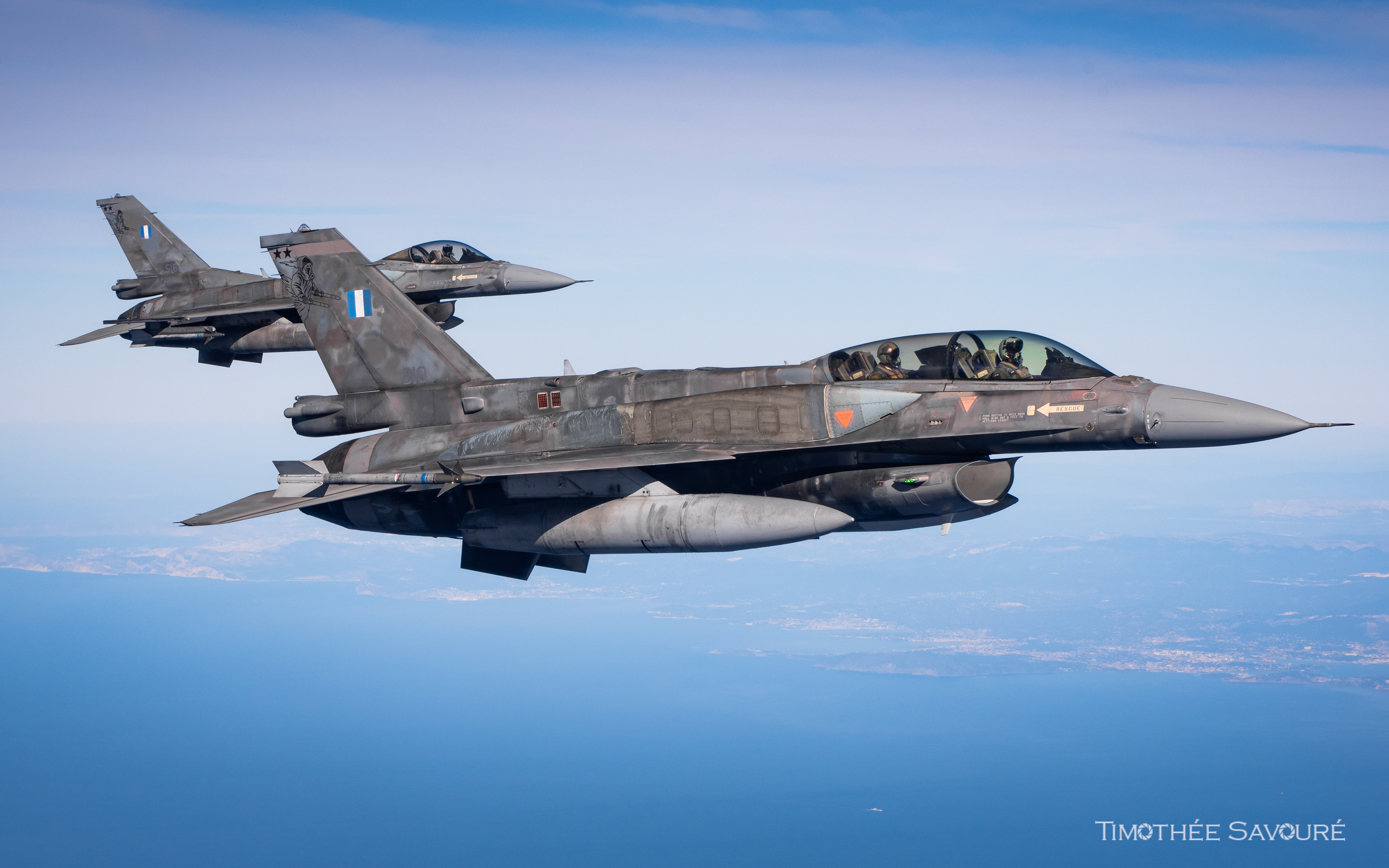
Hellenic Air Force F-16C & F-16D over the Mediterranean Sea | 337 Mira | N°610 & 518
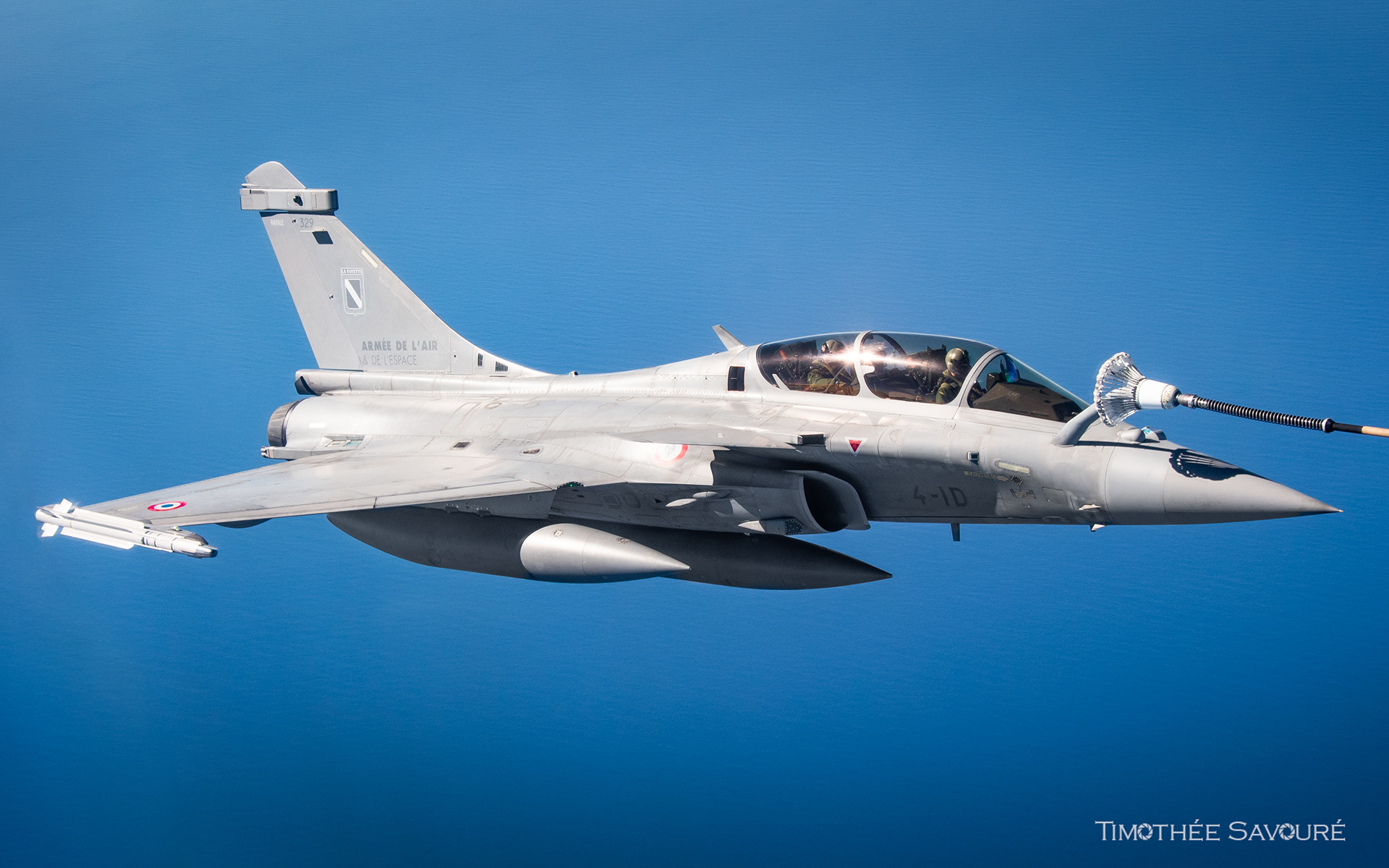
Armée de l'Air Dassault Rafale B air-to-air refueling | Escadron 2/4 Lafayette | 329/4-ID
VOLFA 2025 participants
Four foreign air forces - the United Kingdom, Canada, Greece, and Italy - joined the French Air and Space Force for the three-weeks combined operations over French territory. Together, they represented the full breadth of NATO’s tactical air capability: strike, transport, suppression, and support — all flying in the high-scale simulated operation. The 2025 fleet featured a great line-up of over 50 aircraft, spanning fighters, transports, helicopters, and specialized platforms. Among them:
Fighters and Attack Aircraft - based in Mont-de-Marsan during the training
- Rafale B/C – Multirole fighter and backbone of the AAE, executing air superiority, strike, and escort missions. The Rafale came from Mont-de-Marsan's 30ème Escadre de Chasse and Saint-Dizier's legendary Escadron de Chasse 2/4 'Lafayette'. A pair of Rafale C from the newly reactivated Escadron 1/5 Vendée could also be seen taking part to VOLFA 2025, taking part to one of their first multinational training.
- Mirage 2000D RMV – Strike jet, deployed for low-level interdiction and precision attack missions. The jets came from the 3ème Escadre de Chasse, based in Nancy's BA133, and from which you can find Jet Blast Area's report here: Jet Blast Area - 3ème Escadre de Chasse
- F-16C/D Fighting Falcon (Greece) – Agile multirole fighter from the Hellenic Air Force’s 337 Mira, based in Larissa's 110 Combat Wing and nicknamed 'Ghosts'. They mostly played as Red forces during VOLFA, although they conducted all kinds of missions throughout the exercise.
- Tornado IDS/ECR (Italy) – Deployed from the 6° Stormo in Ghedi (the last Italian Tornado squadron), they acted as electronic combat and SEAD variant, vital for operations in a dense electromagnetic environment, as well as strike missions.
Transport and Support - based in Orléans & Istres
- A400M Atlas from France's 61ème Escadre de transport & Royal Air Force 30 Squadron – Heavy tactical lifter supporting agile deployments throughout the exercise, and taking care of expeditionary logistics. A400Ms also conducted day and night low-level air refueling operations, a first of its kind in a VOLFA training.
- CC-130J Hercules (Canada) – The Royal Canadian Air Force provided logistic reach, airdrop operations, and added to the complexity and realism of multinational coordination during VOLFA.
- A330 MRTT – Flying daily missions from Istres, the 31 EARTS provided strategic air-to-air refuelling for fighters.
Helicopters and Specialized Aircraft
- EC725 Caracal (France) – Dedicated to search-and-rescue, extraction, and low-level support missions from Cazaux Air Base.
- Light ISR platforms and drones (France) – Used for reconnaissance, target simulation, and anti-drone training.
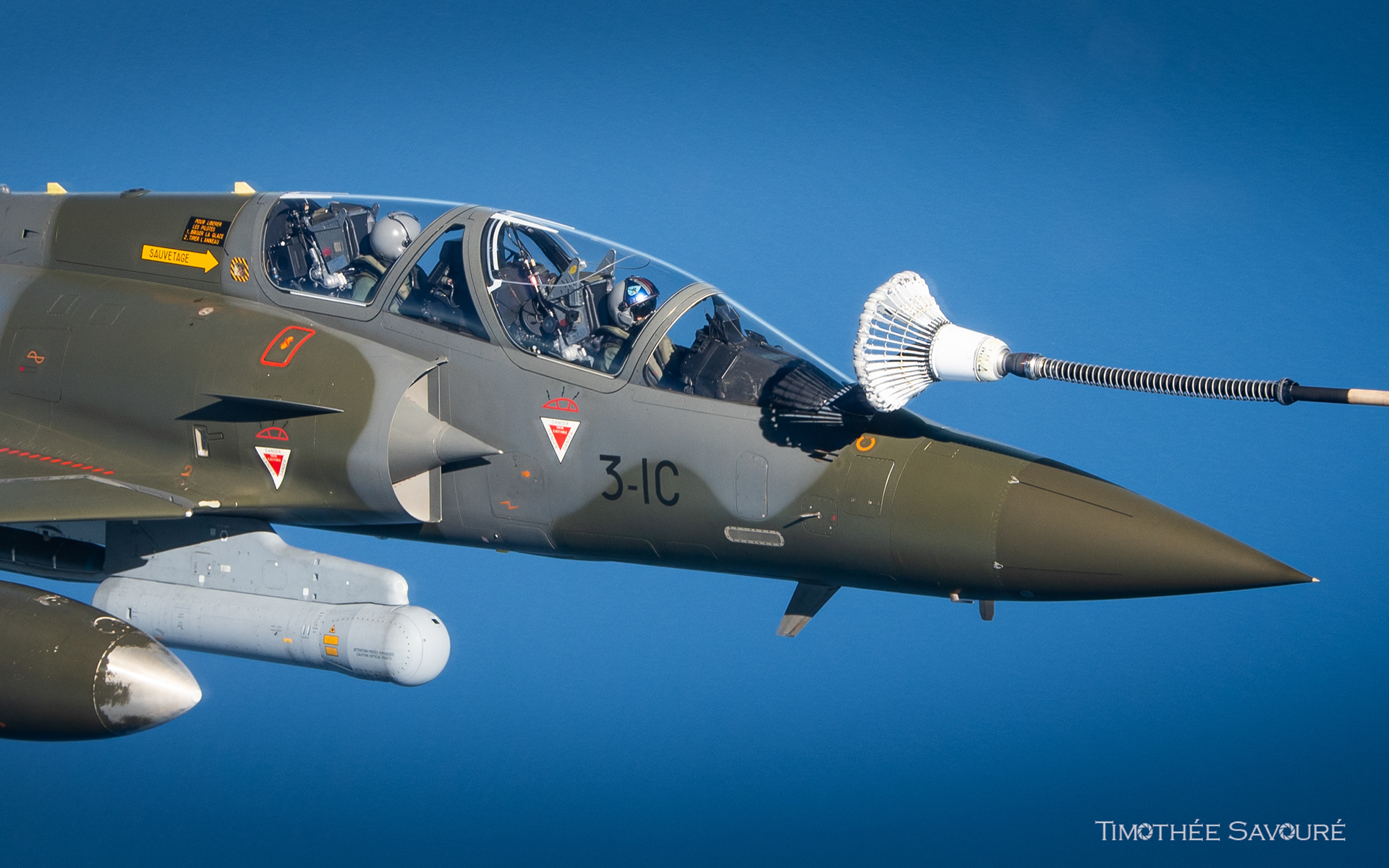
Armée de l'Air Dassault Mirage 2000D | Escadron 2/3 Champagne | 626/3-IC
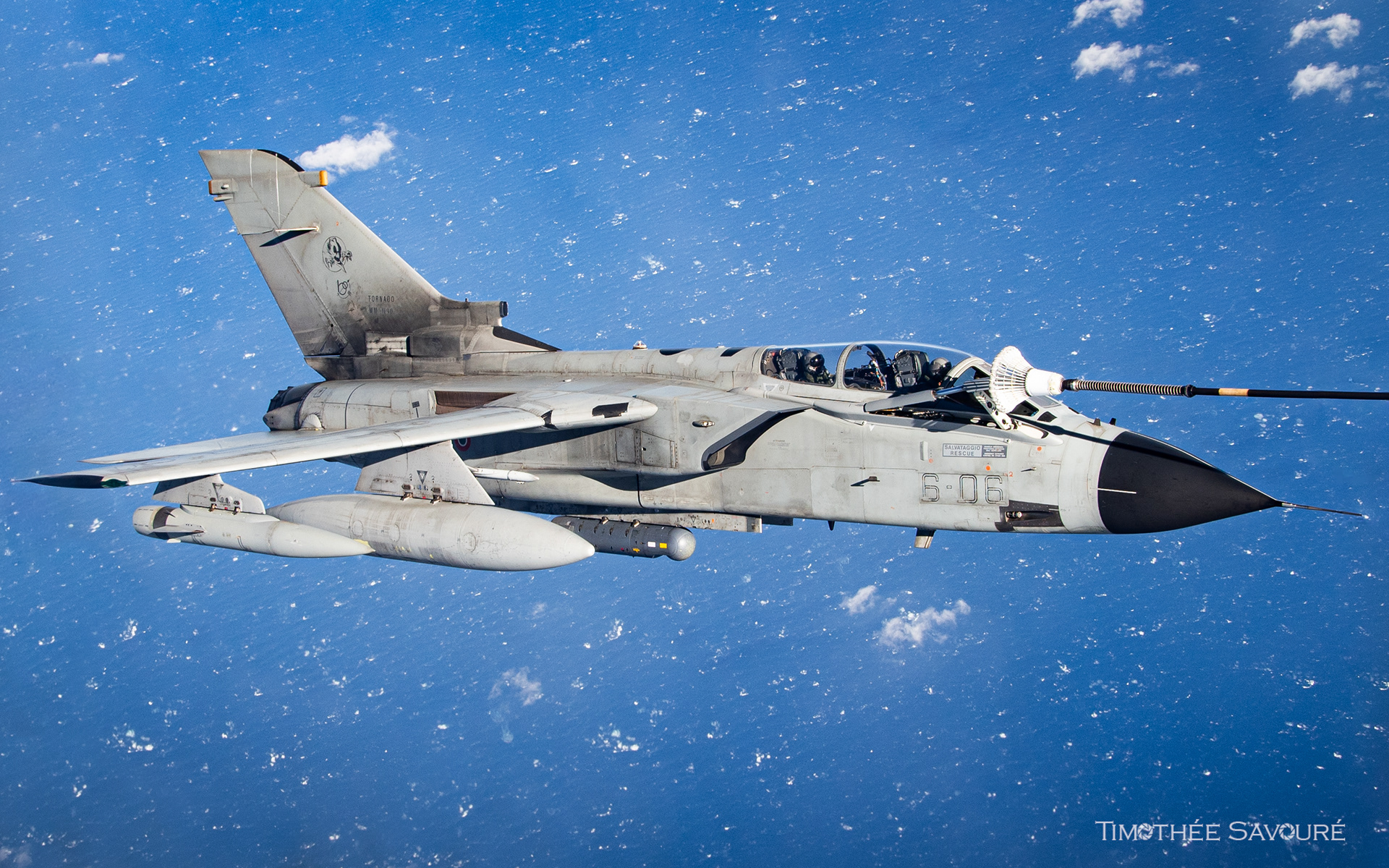
Aeronautica Militare Panavia Tornado IDS | 6° Stormo | MM7036 6-06
In flight with VALIANT26
Istres Air Base, 08:00. The sun had barely cleared the hangars of BA 125 when we checked in for the day’s sortie. We were quickly driven to the Hub, a new building inaugurated in May 2024 and allowing transit of around 100.000 passengers every year and in which we would take part to the briefing with the crew.
The flight's briefing was conducted with our 4 crews, just out of the mass brief, a remote meeting with all the VOLFA participants. Our mission was tanker flight VALIANT 26, supporting the main air package of the day. During the detailed briefing, every aspect of the flight was dissected: take-off from Istres at 10:15 local, two refueling zones — one south of Marseille, the other west of Corsica — and a return around 13:40. The A330 MRTT “Phénix”, tail 047 (registered F-UJCM), would be departing around maximum take-off weight: 233 tonnes, meaning no early return in case of a problem. The crew reviewed potential risks — bird activity, crosswinds, turbulence during flight, NOTAMs, and diversion airfields — before running through the list of 24 receiver aircraft scheduled. That figure drew smiles from the journalists present; few sorties offer such variety in a single flight.
Outside on the ramp, the Phénix was being prepared under the morning light. The captain (Fabien, 32 years old and 1300 flight hours on MRTT) walked us through the external walk around, a common procedure for any Airbus pilot and the same checklist used in civil aviation. Once aboard, we took our seats in the forward cabin. Today the aircraft was configured full-pax — 272 seats, instead of the usual 70-seat rear-section setup used for tanker operations.
At 10:15 sharp, VALIANT 26 lifted smoothly from Istres' runway 33, banking south toward the Mediterranean. Barely 20 minutes later, the radio came alive — a pair of Italian Tornado IDS, callsign COUGAR, checked in. The refueling hoses were already extended from the under-wing pods as the pair approached in the refueling track, a wide racetrack pattern over the sea.
The Tornado pilots inched forward, baskets shimmering in the sunlight. Contact. Fuel began flowing — about 500 kg per minute at 270 knots, with a 15-degree bank limit to keep everything stable. Five minutes later, the Italians detached, peeling up and right in perfect synchrony.
The Tornado pilots inched forward, baskets shimmering in the sunlight. Contact. Fuel began flowing — about 500 kg per minute at 270 knots, with a 15-degree bank limit to keep everything stable. Five minutes later, the Italians detached, peeling up and right in perfect synchrony.
Next, we turned east toward Corsica, pods retracted, to meet our Hellenic guests. Two F-16s from the Hellenic Air Force, quickly joined by another pair from 337 Mira “Sparta”, arrived on frequency. The leader slid into position behind the tanker while the other three waited off the left wing — a perfect photo setup with the French Riviera below. For the Greeks, the refueling method differs: their aircraft use a boom receptacle, so the A330’s centerline hose-and-drogue system is adapted to deliver a rigid probe connection.
Behind the scenes, the two ARO (Air Refueling Operator) in the Phénix’s mission console monitors every movement via high-definition cameras, adjusting hose tension, flow rate, and boom stability in real time. The boom operator role was played by Cyprien, 40 years old, totalling more than 4000 flight hours on the C-135 and MRTT, and the pod operator was Benjamin, 30 years old, newly arrived in the squadron as ARO on the MRTT.
Behind the scenes, the two ARO (Air Refueling Operator) in the Phénix’s mission console monitors every movement via high-definition cameras, adjusting hose tension, flow rate, and boom stability in real time. The boom operator role was played by Cyprien, 40 years old, totalling more than 4000 flight hours on the C-135 and MRTT, and the pod operator was Benjamin, 30 years old, newly arrived in the squadron as ARO on the MRTT.
Fifteen minutes later, the Greek Falcons were gone, and we continued our journey towards the next track — axis “Léa”, inside zone D54, a corridor often used by the French Navy. Here, for nearly ninety minutes, the sky became a carousel of French fighters: eight Rafales (callsigns ROGUE and ROSTOFF) and six Mirage 2000D (callsigns TWIN and RAGE), all thirsty after long tactical runs.
At 300 knots, each formation took turns plugging in, taking fuel, then diving back toward their combat zones. One Mirage pair even returned a second time — proof of the length and complexity of VOLFA missions. Blue and Red forces refueled alike; in this phase, the tanker was neutral but indispensable. Only one element canceled: a flight of Mirage 2000-5F that didn’t make the slot.
By the time we headed back to Istres, the numbers told their own story — 63 tonnes of fuel transferred to 20 aircraft.
For us in the cabin, it was hard not to feel humbled: in the heart of VOLFA 2025, as well as in a daily basis, the A330 MRTT isn’t just a support platform — it is the invisible lifeline keeping the French Air Force alive, one contact at a time. This flight was an opportunity to observe the operational differences between the A330 MRTT and the KC-135, which was retired from service earlier this year. It clearly illustrated the technological leap achieved by the French Air and Space Force in its transition to the new generation of tanker aircraft. You can find Jet Blast Area's report about a flight in one of the last KC-135R before retirement from the French forces here: Jet Blast Area - The last French C-135s
At 300 knots, each formation took turns plugging in, taking fuel, then diving back toward their combat zones. One Mirage pair even returned a second time — proof of the length and complexity of VOLFA missions. Blue and Red forces refueled alike; in this phase, the tanker was neutral but indispensable. Only one element canceled: a flight of Mirage 2000-5F that didn’t make the slot.
By the time we headed back to Istres, the numbers told their own story — 63 tonnes of fuel transferred to 20 aircraft.
For us in the cabin, it was hard not to feel humbled: in the heart of VOLFA 2025, as well as in a daily basis, the A330 MRTT isn’t just a support platform — it is the invisible lifeline keeping the French Air Force alive, one contact at a time. This flight was an opportunity to observe the operational differences between the A330 MRTT and the KC-135, which was retired from service earlier this year. It clearly illustrated the technological leap achieved by the French Air and Space Force in its transition to the new generation of tanker aircraft. You can find Jet Blast Area's report about a flight in one of the last KC-135R before retirement from the French forces here: Jet Blast Area - The last French C-135s
Jet Blast Area would like to sincerely thank Capitaine Melissa GENUA of the SIRPA Air, Lieutenant Xandra PENENT from the communication office of BA125 Istres, as well as to the crew of VALIANT26 and all the personnel of the ERVTS for their warm welcome and great support during this report.
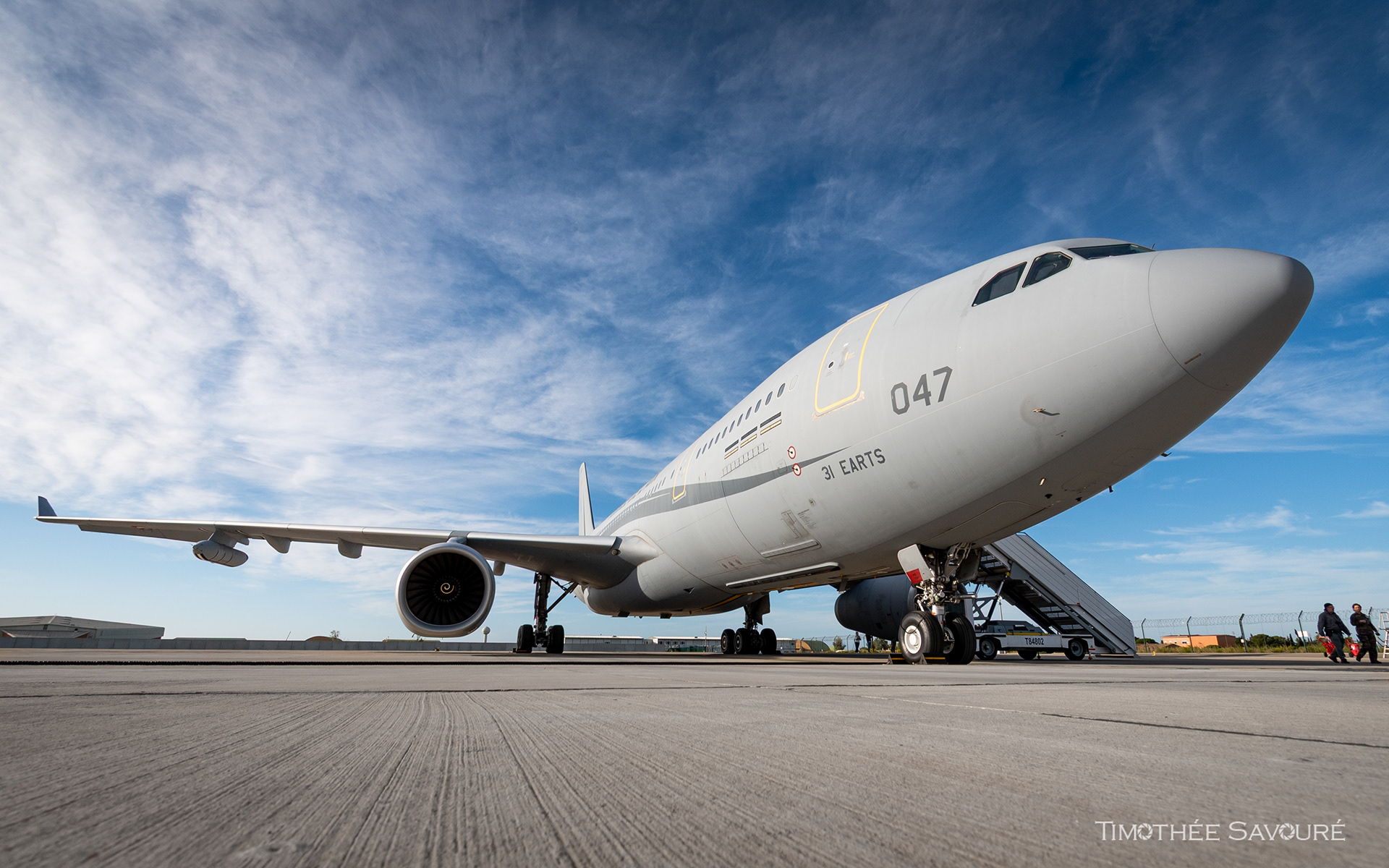
A330MRTT n°047 F-UJCM in Istres AFB apron
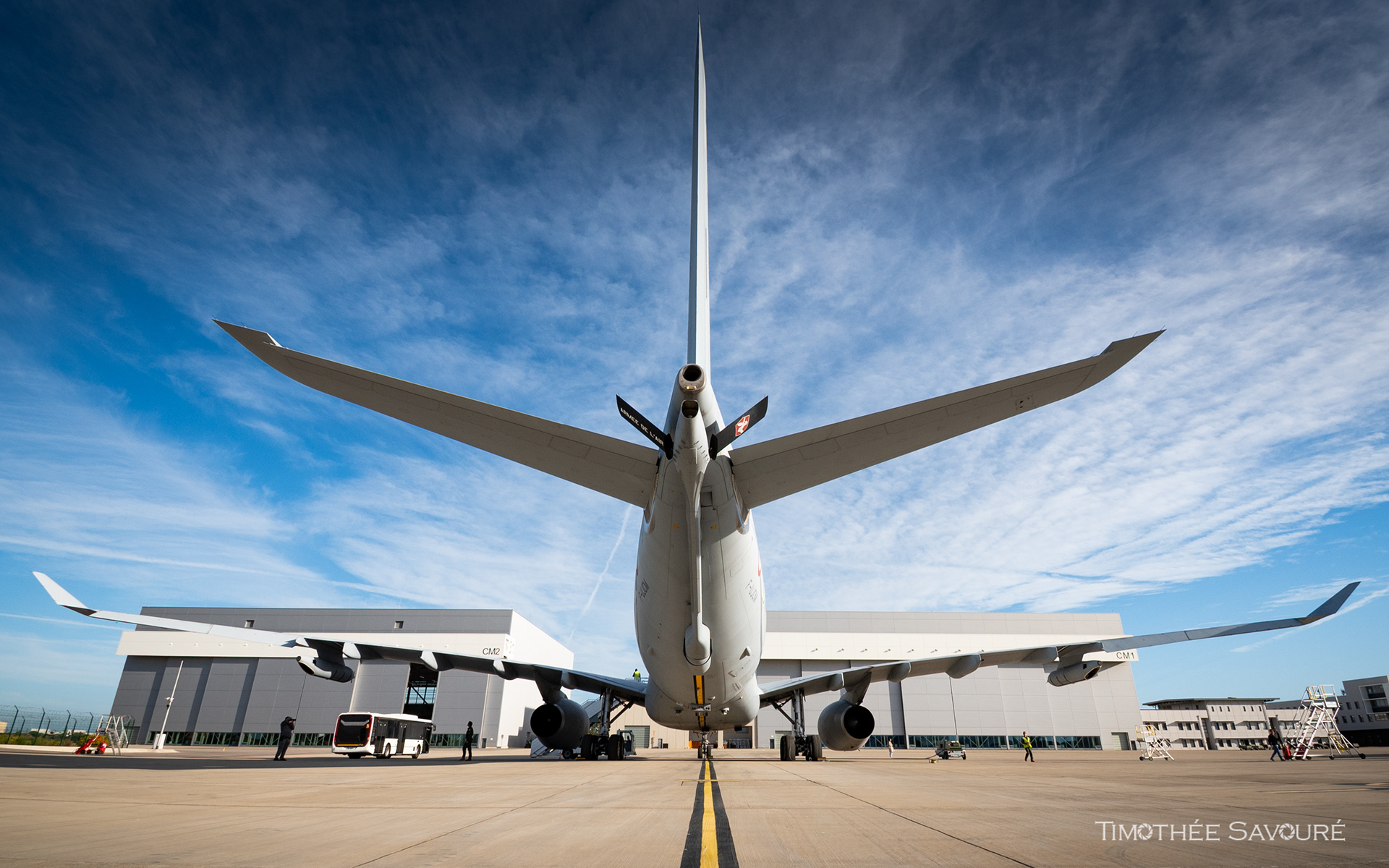
A330MRTT n°047 F-UJCM in Istres AFB apron
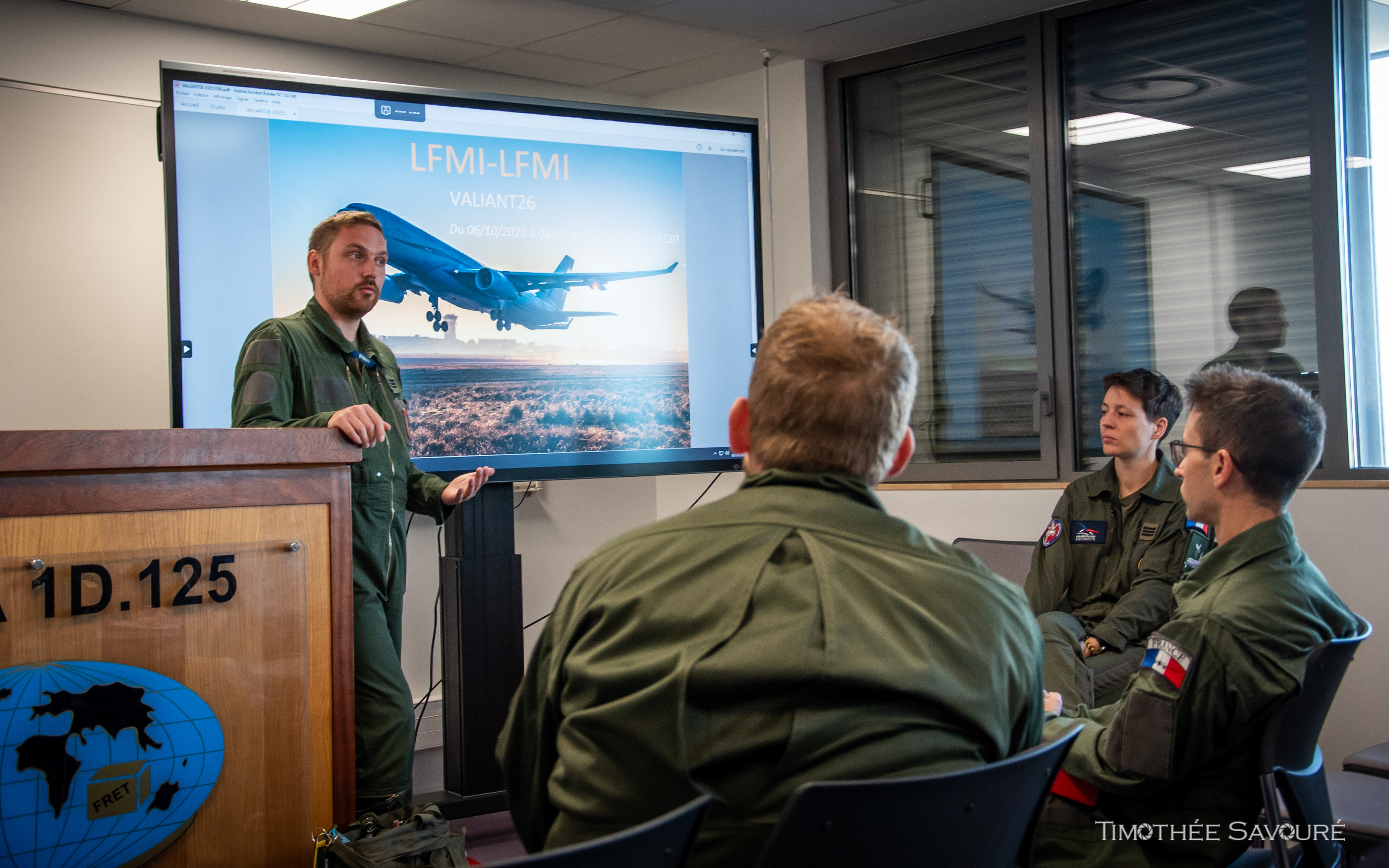
VALIANT26 pre-flight briefing
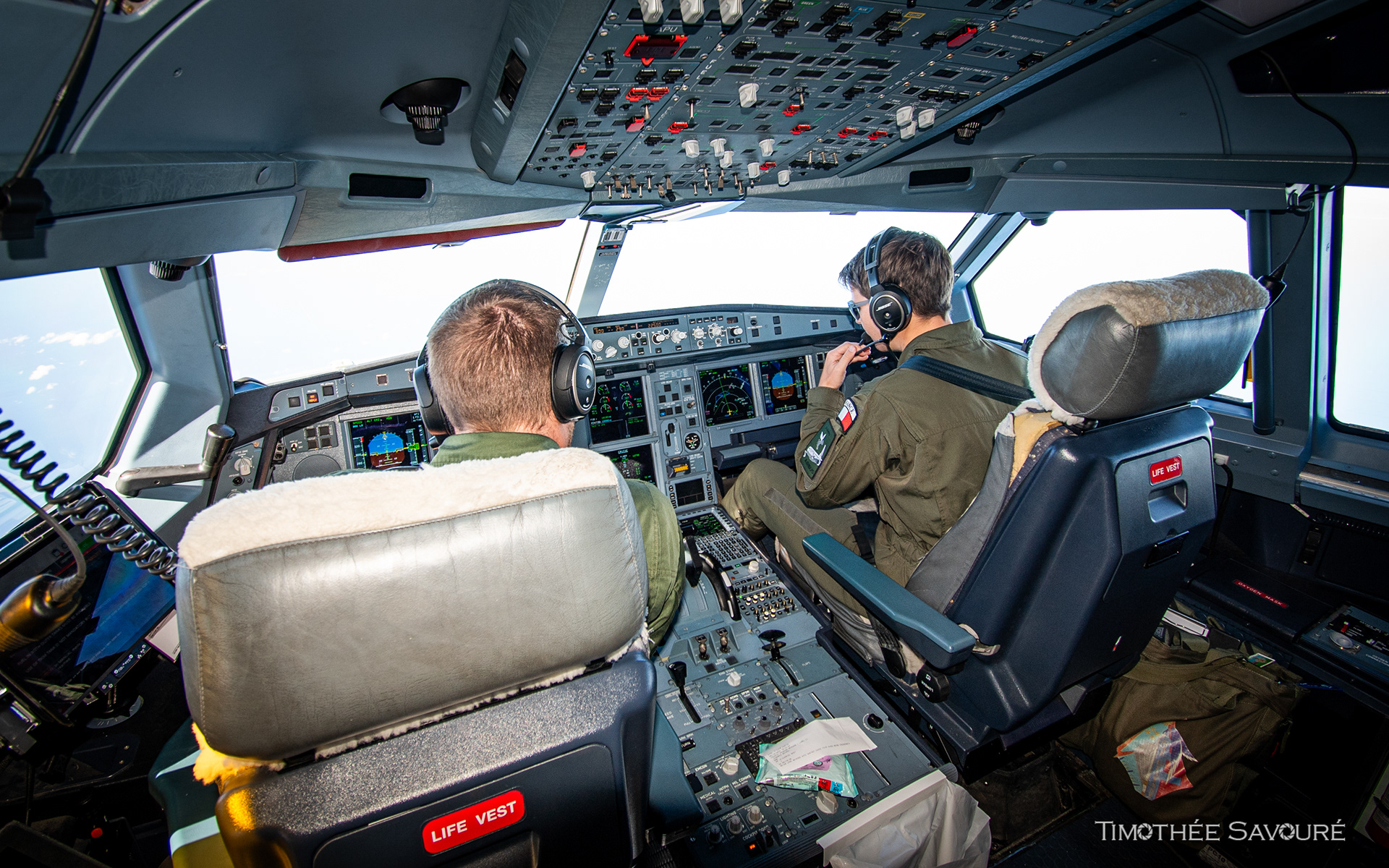
A330MRTT n°047 F-UJCM crew during the flight
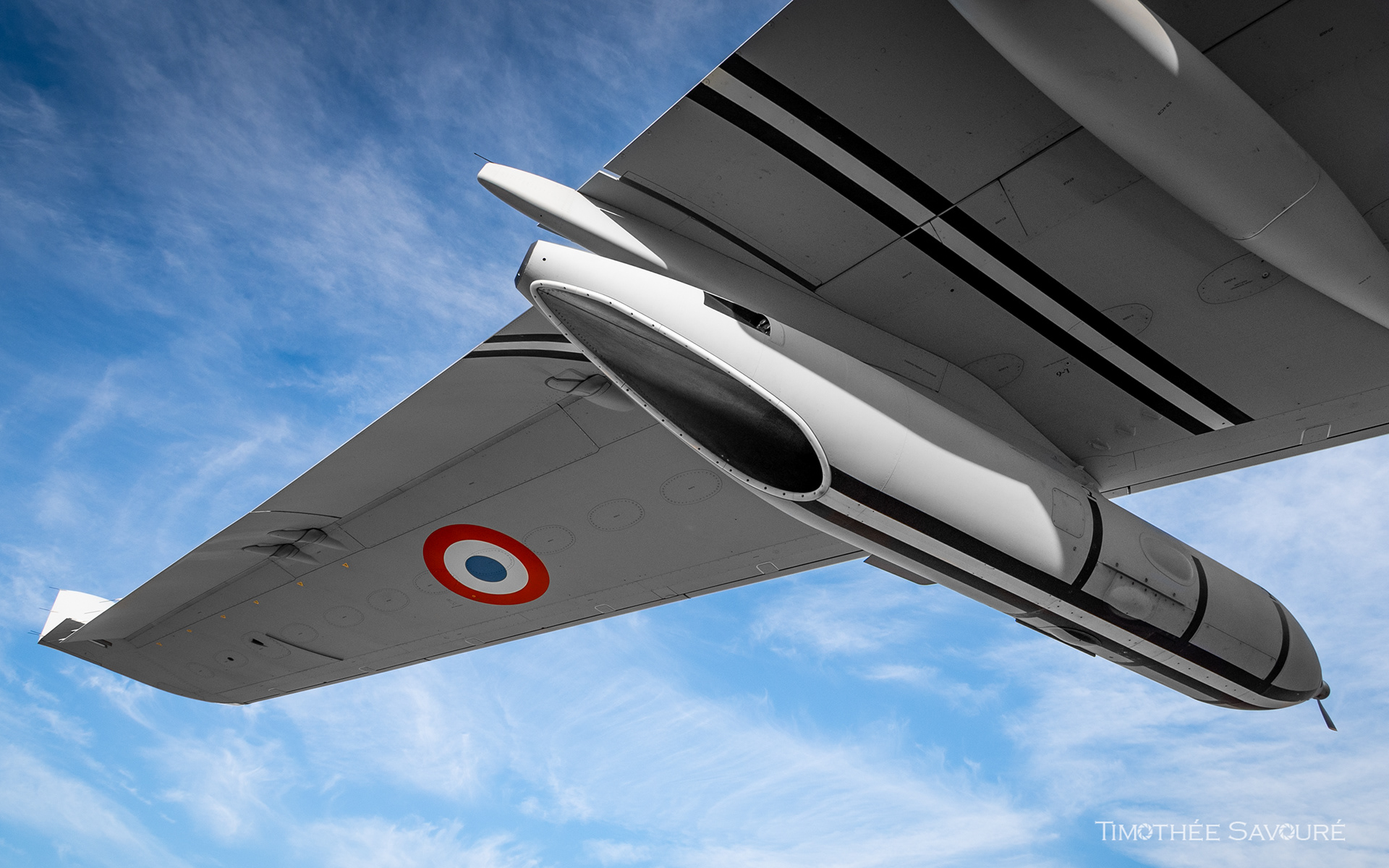
A330MRTT n°047 F-UJCM left underwing pod up close
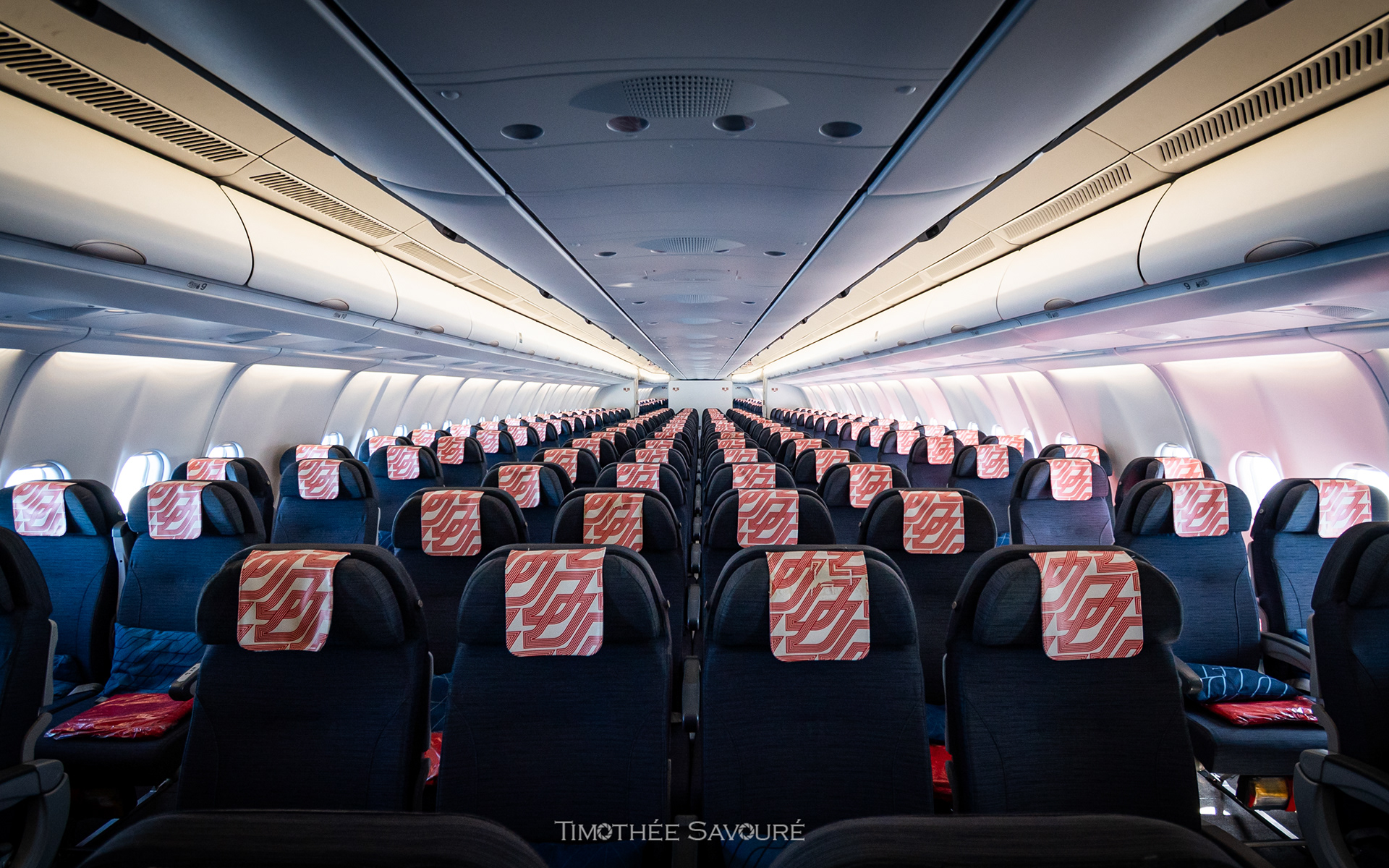
A330MRTT n°047 F-UJCM cabin
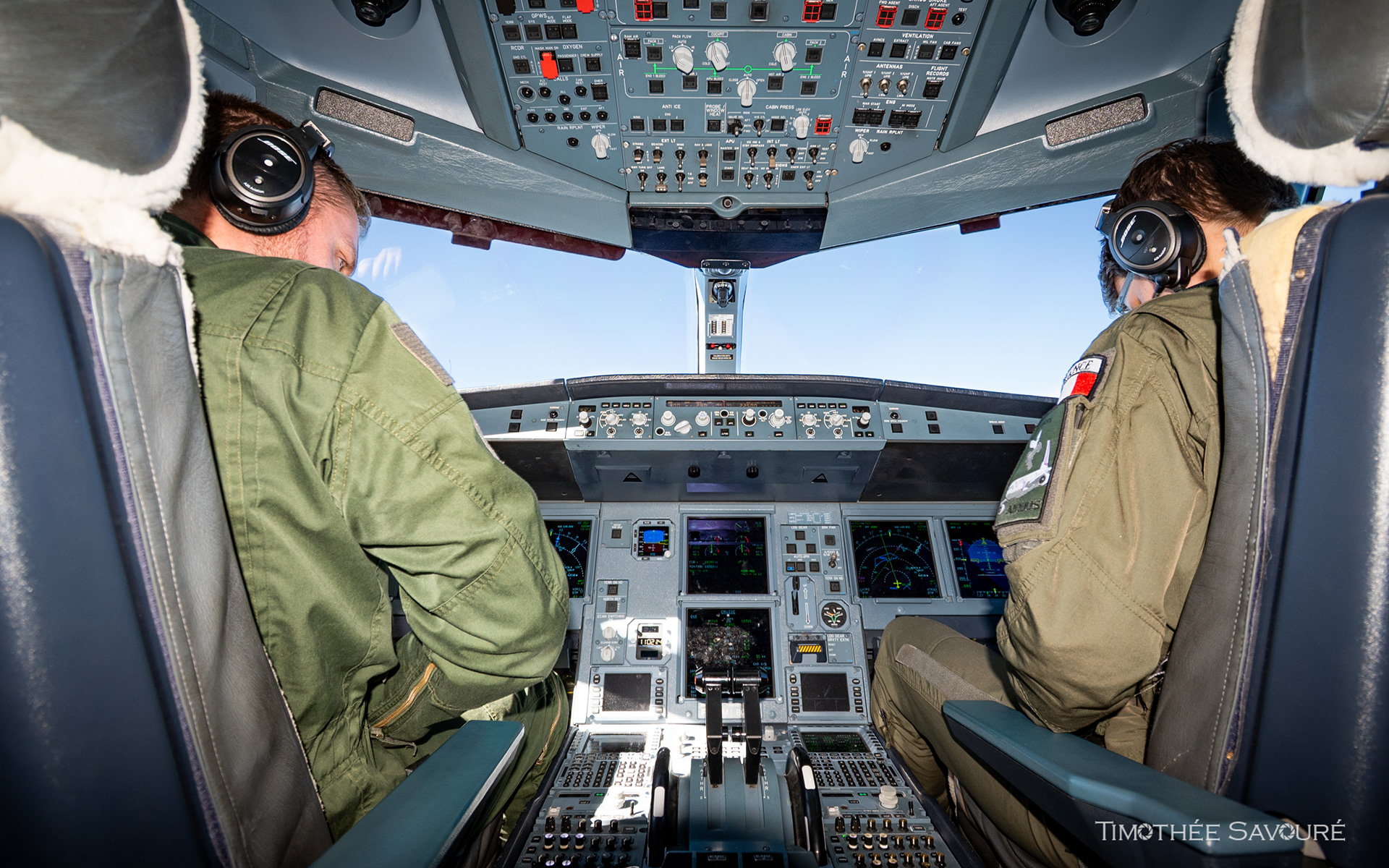
A330MRTT n°047 F-UJCM crew during the flight
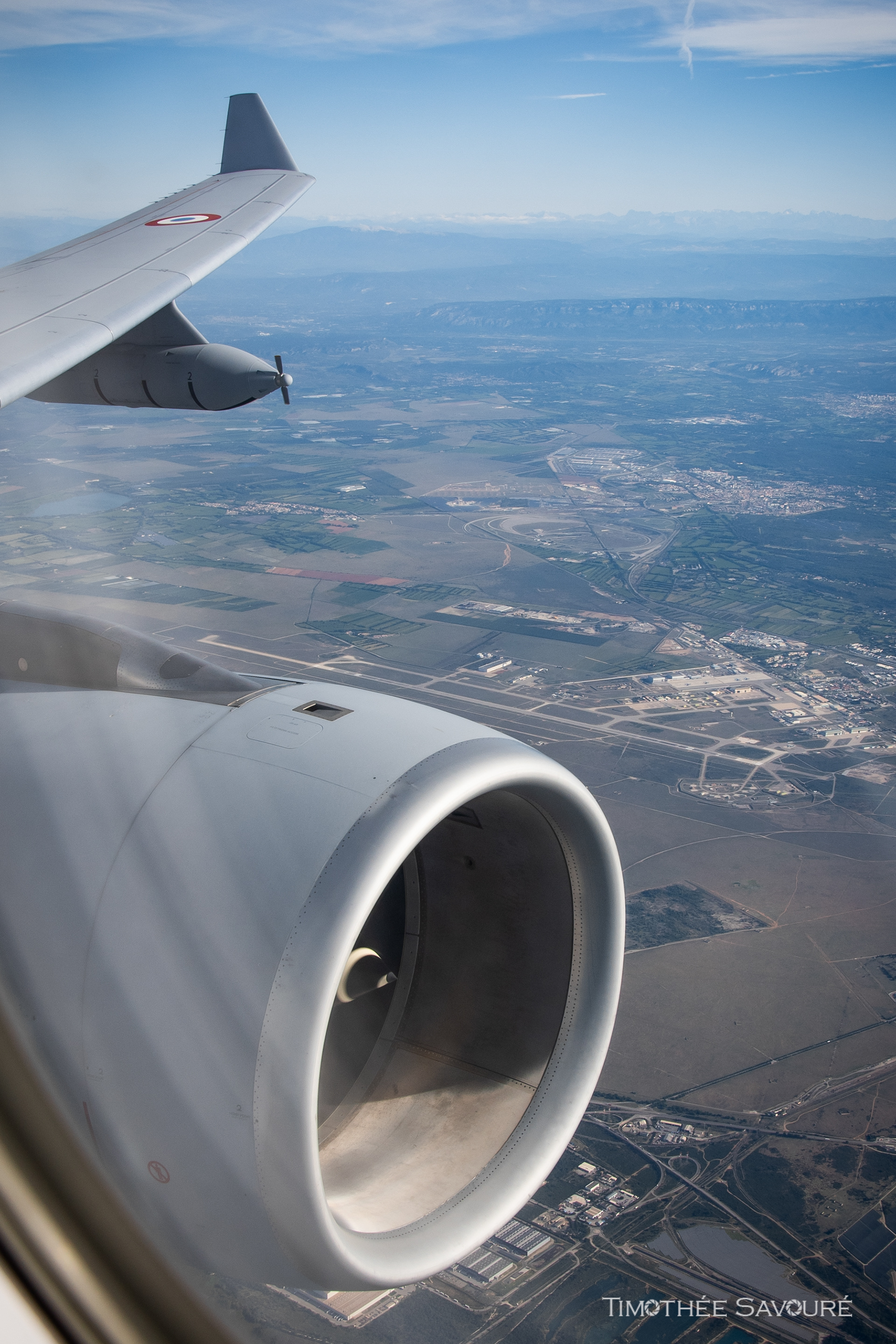
The view from the window of VALIANT26 after take-off from Istres
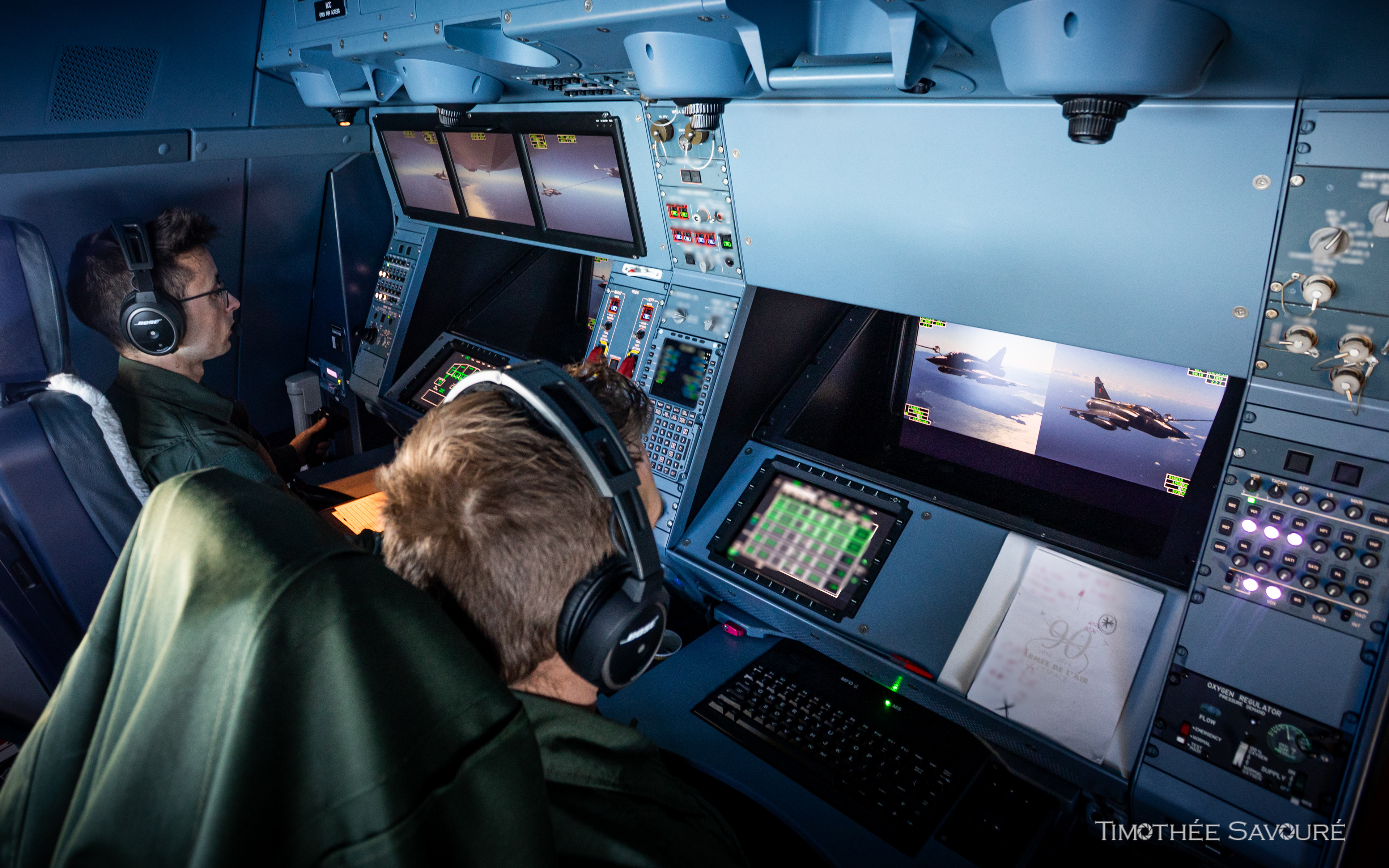
A330MRTT n°047 F-UJCM ARO console during the air-to-air refueling
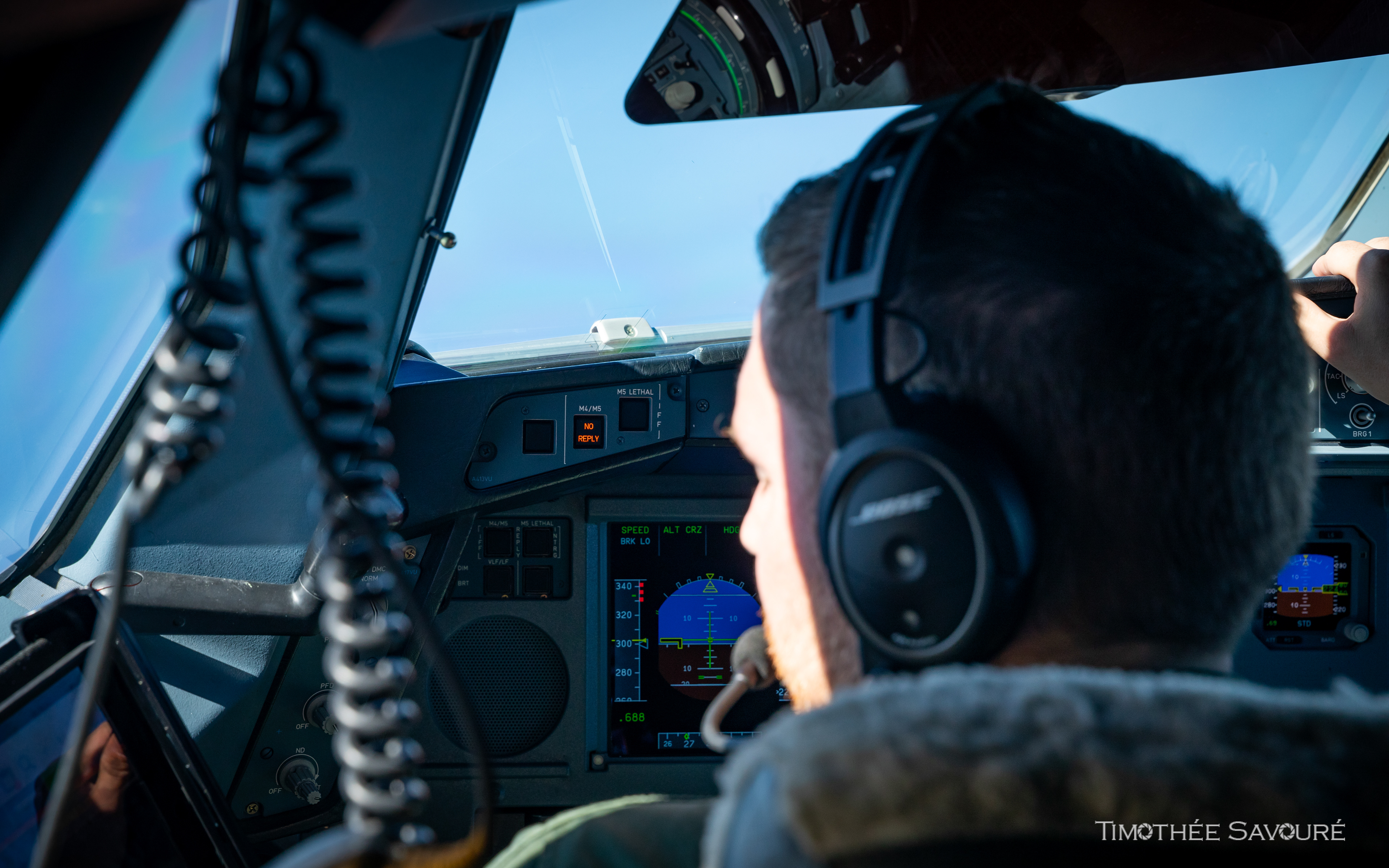
Cockpit of VALIANT26
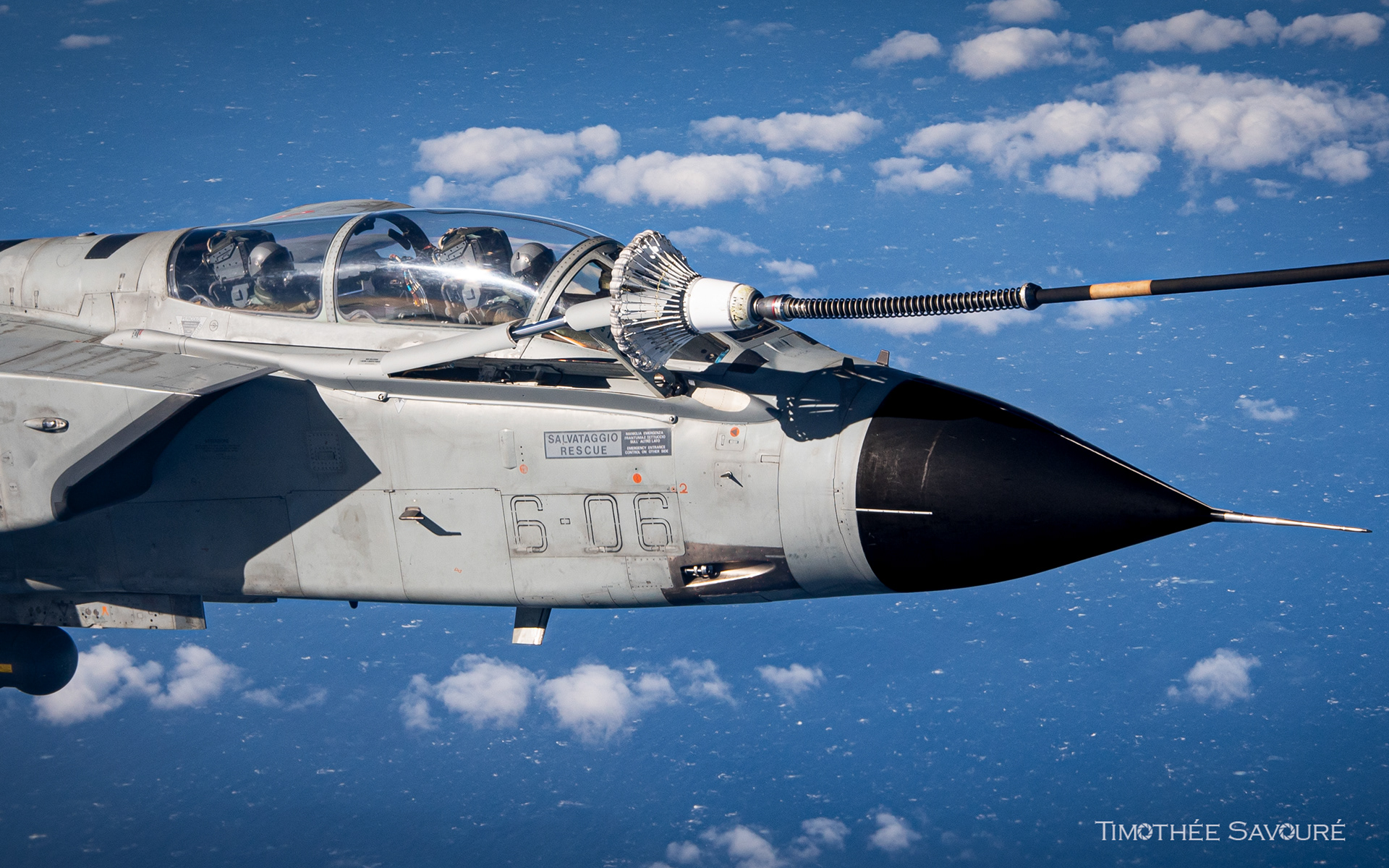
Aeronautica Militare Panavia Tornado IDS | 6° Stormo | MM7036 6-06

Hellenic Air Force F-16C & F-16D over the Mediterranean Sea | 337 Mira | N°610 & 518
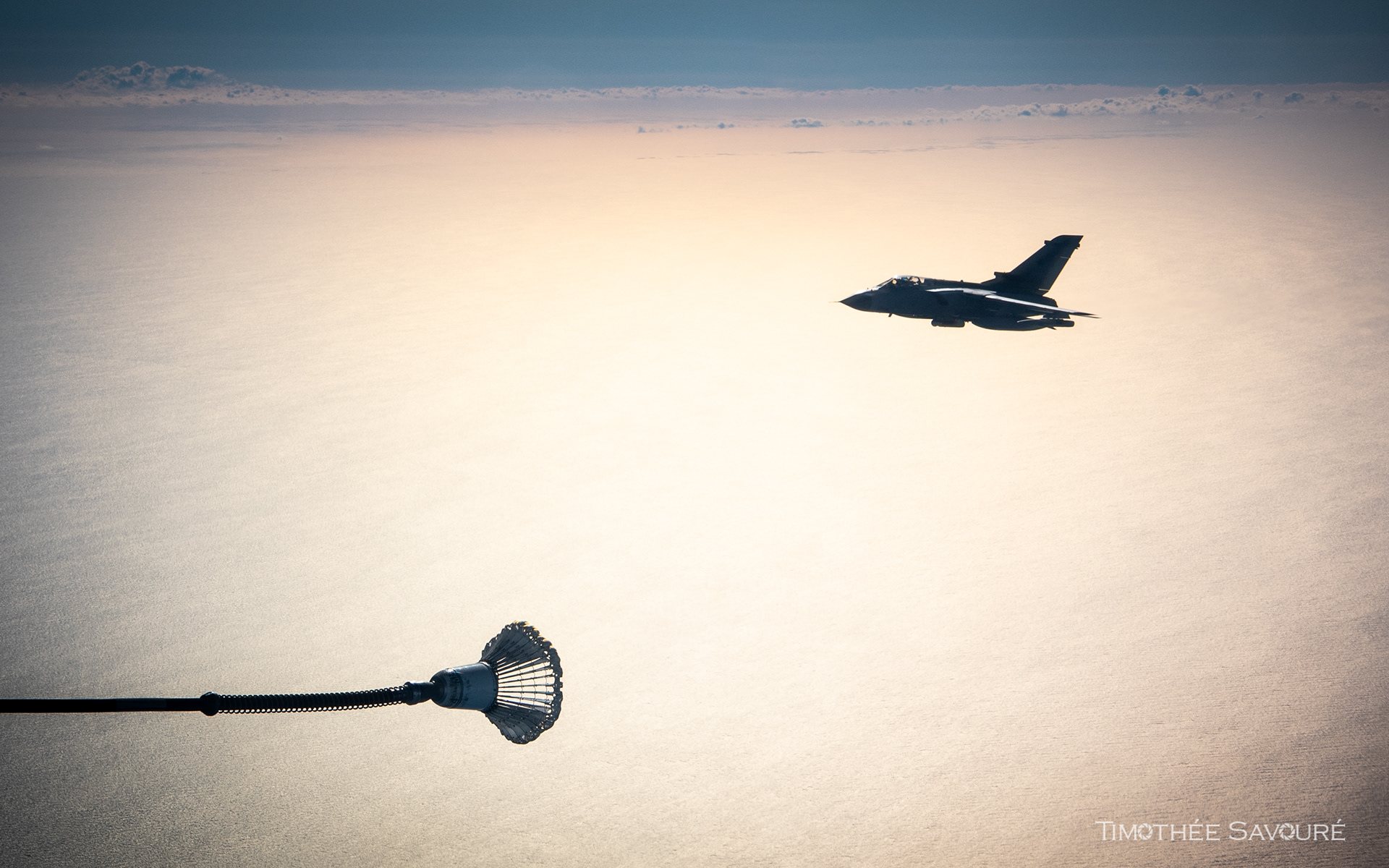
Aeronautica Militare Panavia Tornado IDS | 6° Stormo
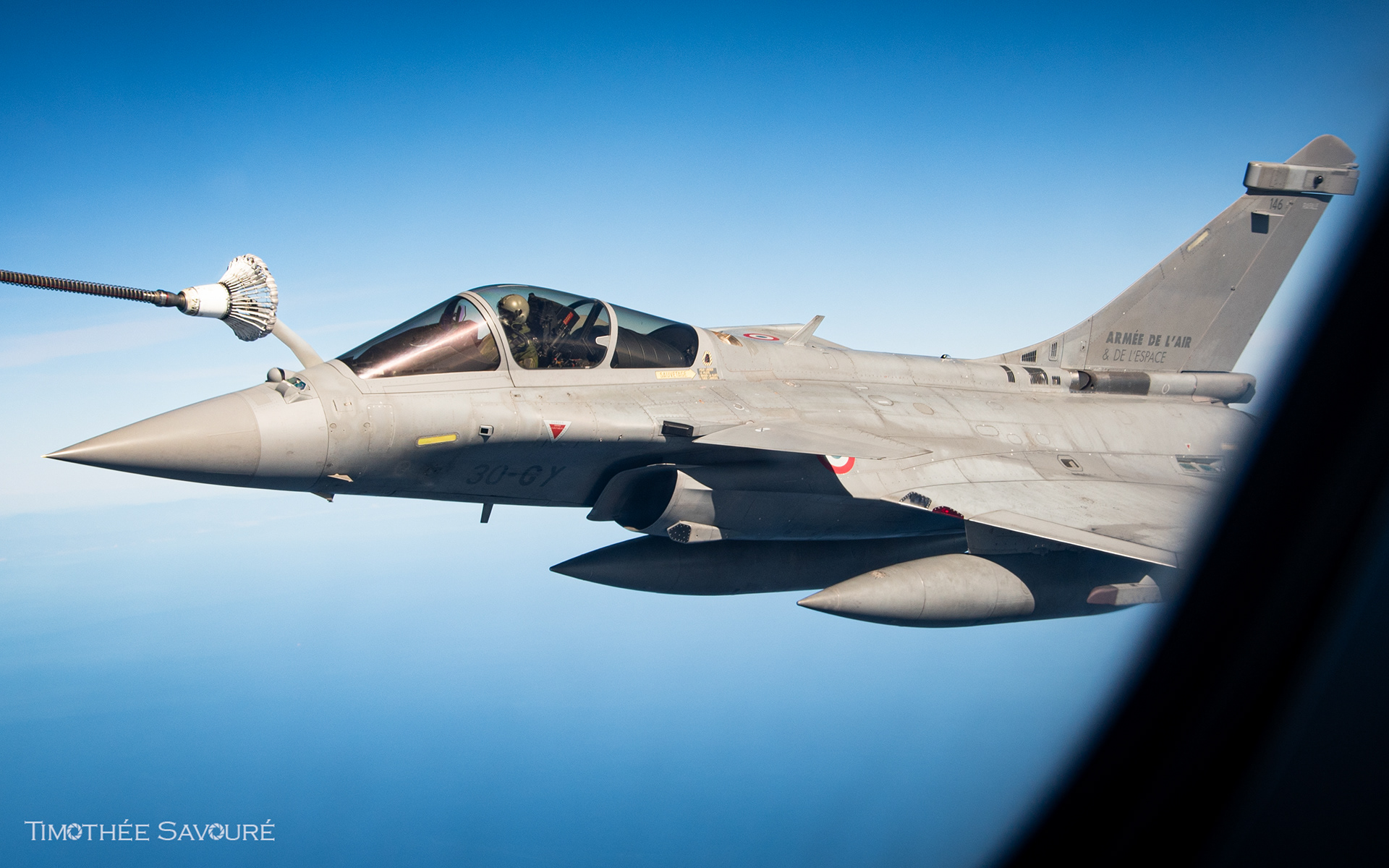
Armée de l'Air Dassault Rafale C | EC 1/30 Normandie-Niemen | C146 30-GY

Hellenic Air Force F-16C & F-16D over the Mediterranean Sea | 337 Mira
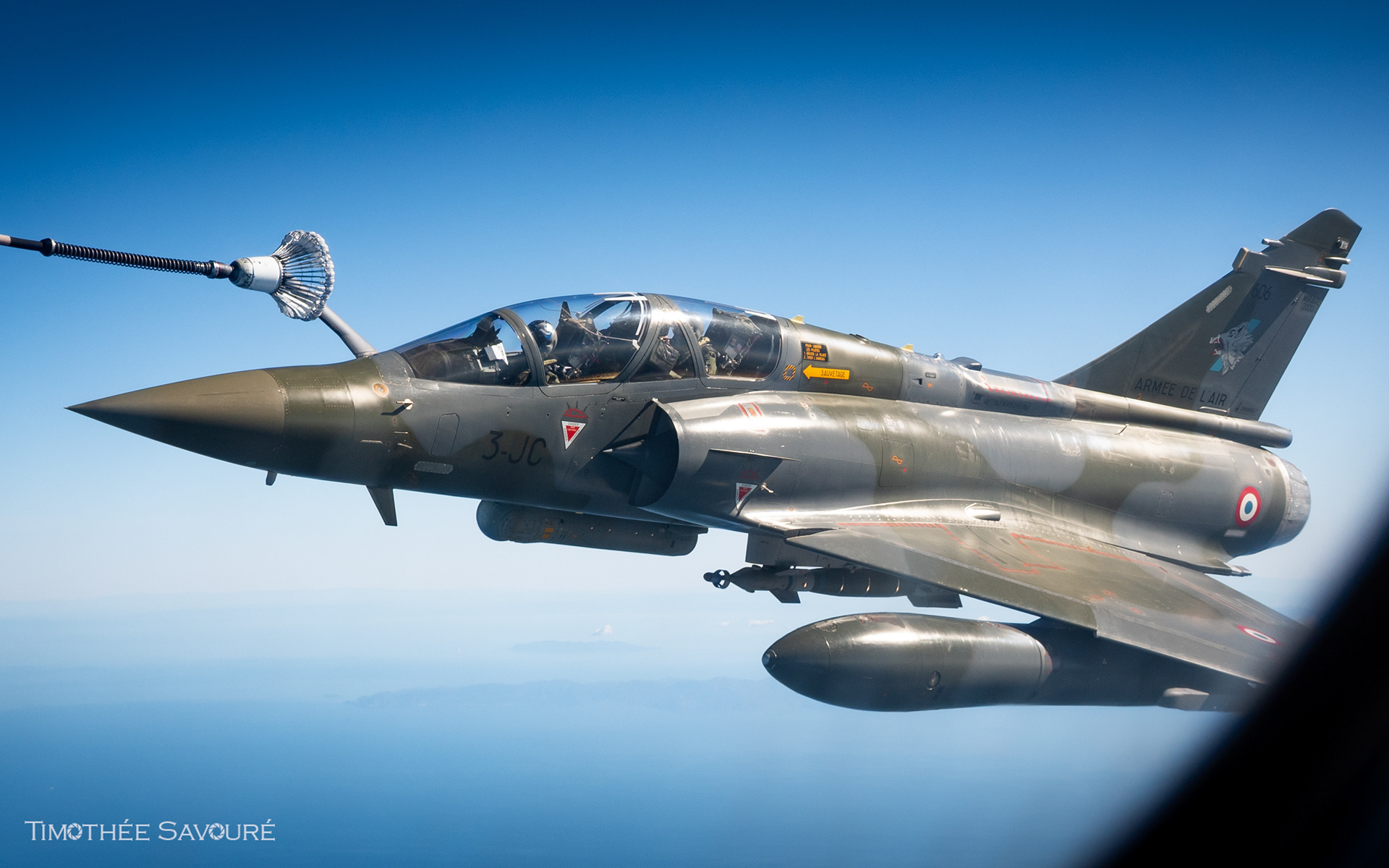
Armée de l'Air Dassault Mirage 2000D | EC 3/3 Ardennes | 606 3-JC
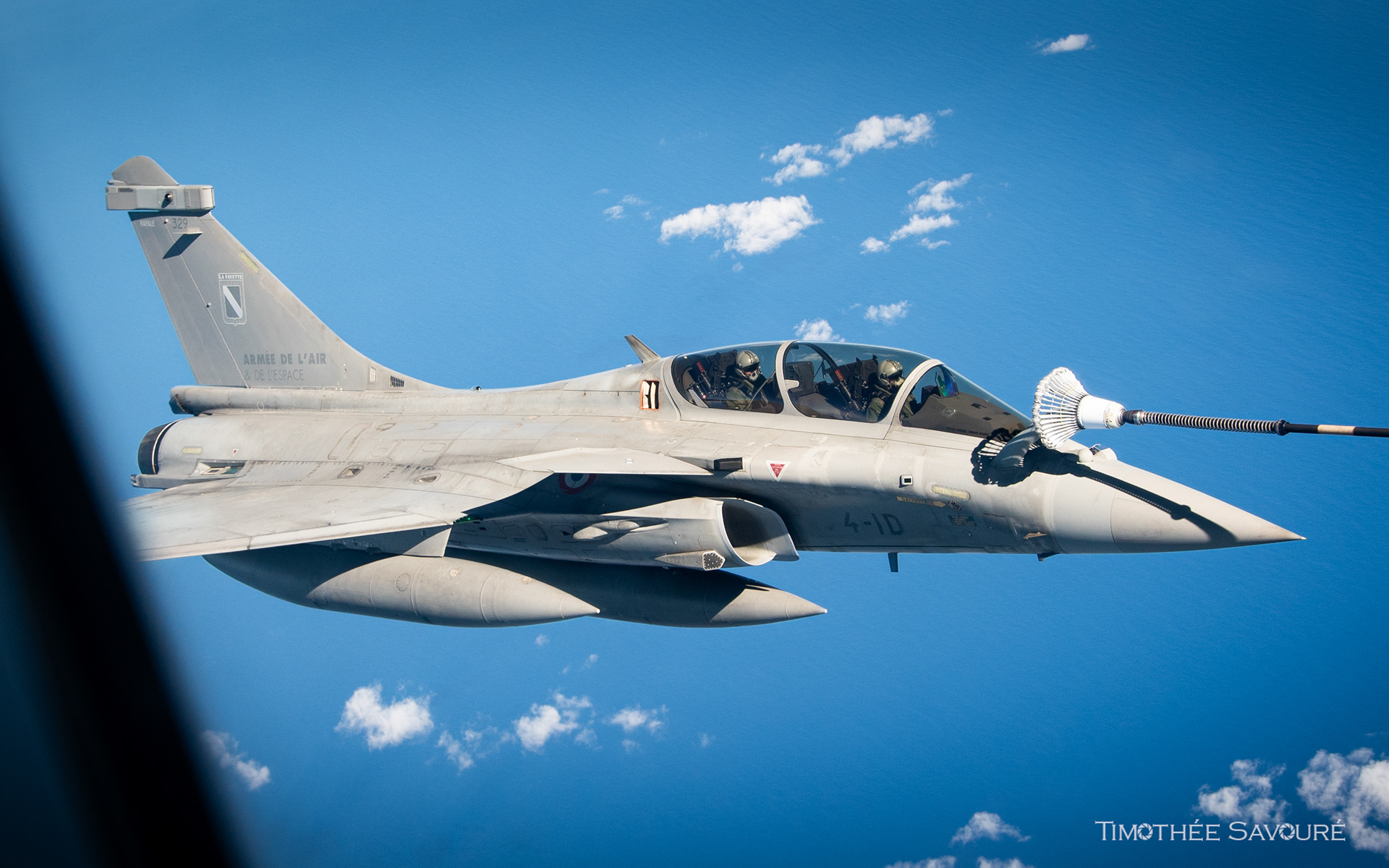
Armée de l'Air Dassault Rafale B | EC 2/4 Lafayette | 329 4-ID

Hellenic Air Force F-16C & F-16D over the Mediterranean Sea | 337 Mira
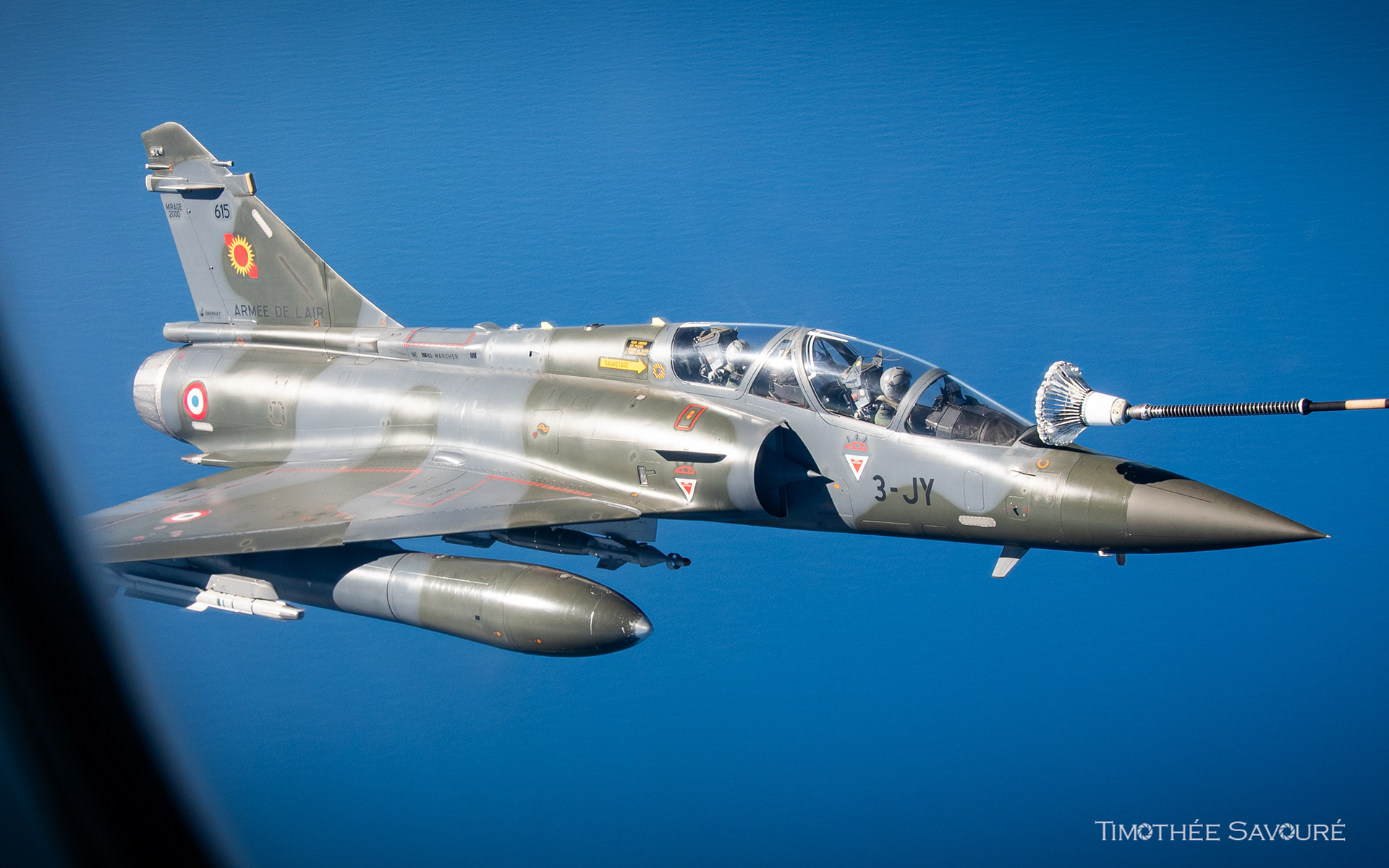
Armée de l'Air Dassault Mirage 2000D | EC 2/3 Champagne | 615 3-JY
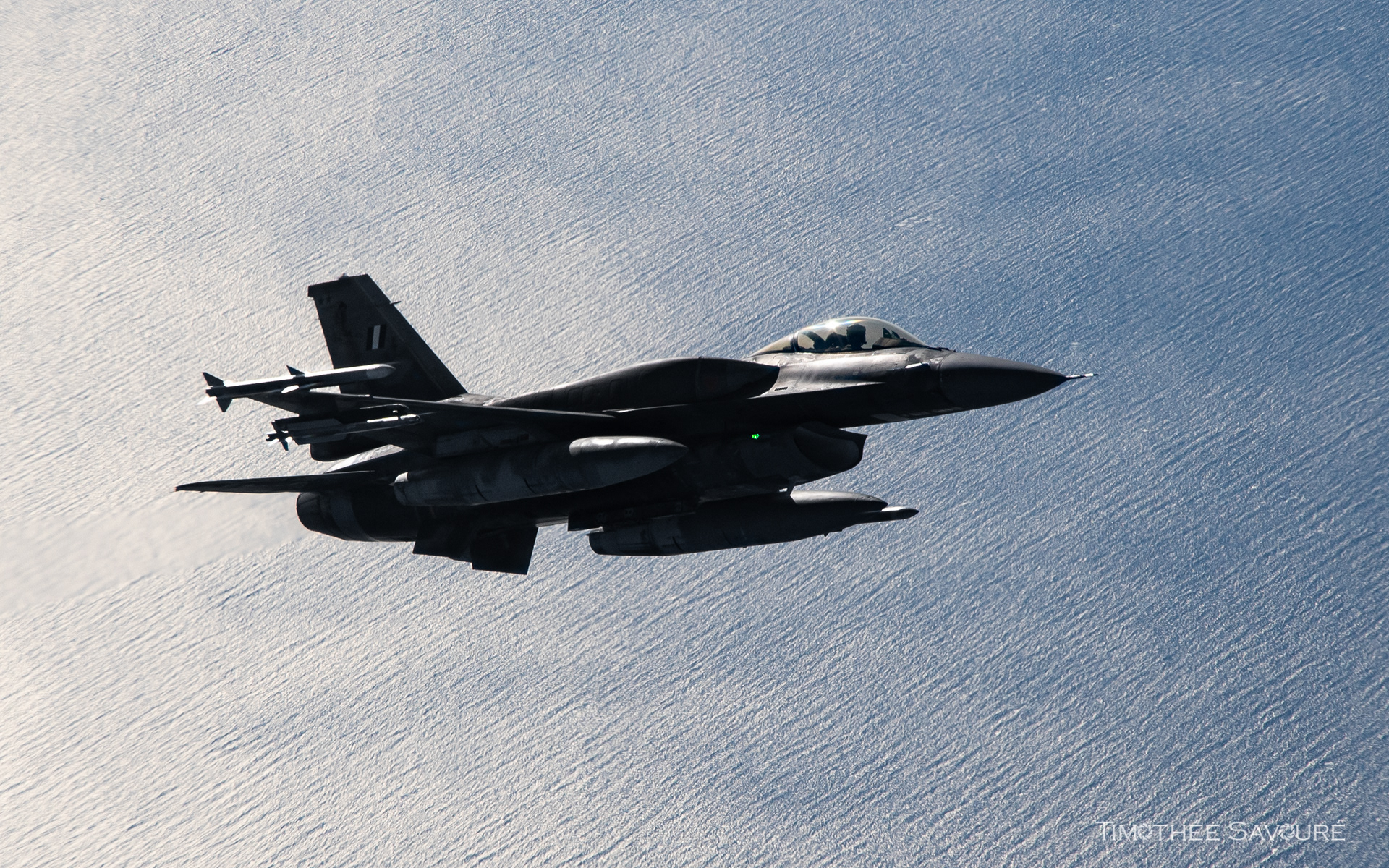
Hellenic Air Force F-16C | 337 Mira | 518
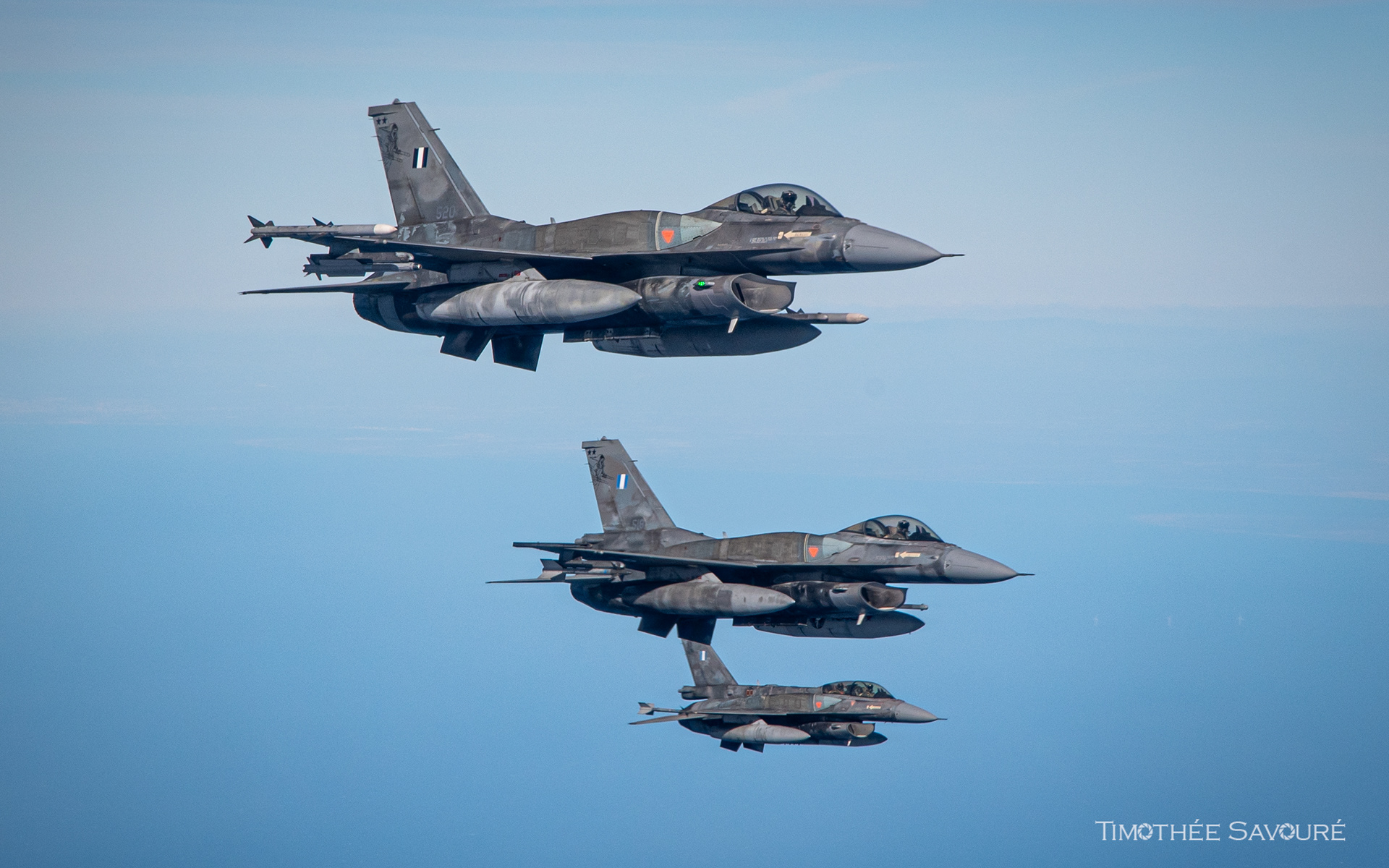
Hellenic Air Force F-16C & F-16D over the Mediterranean Sea | 337 Mira
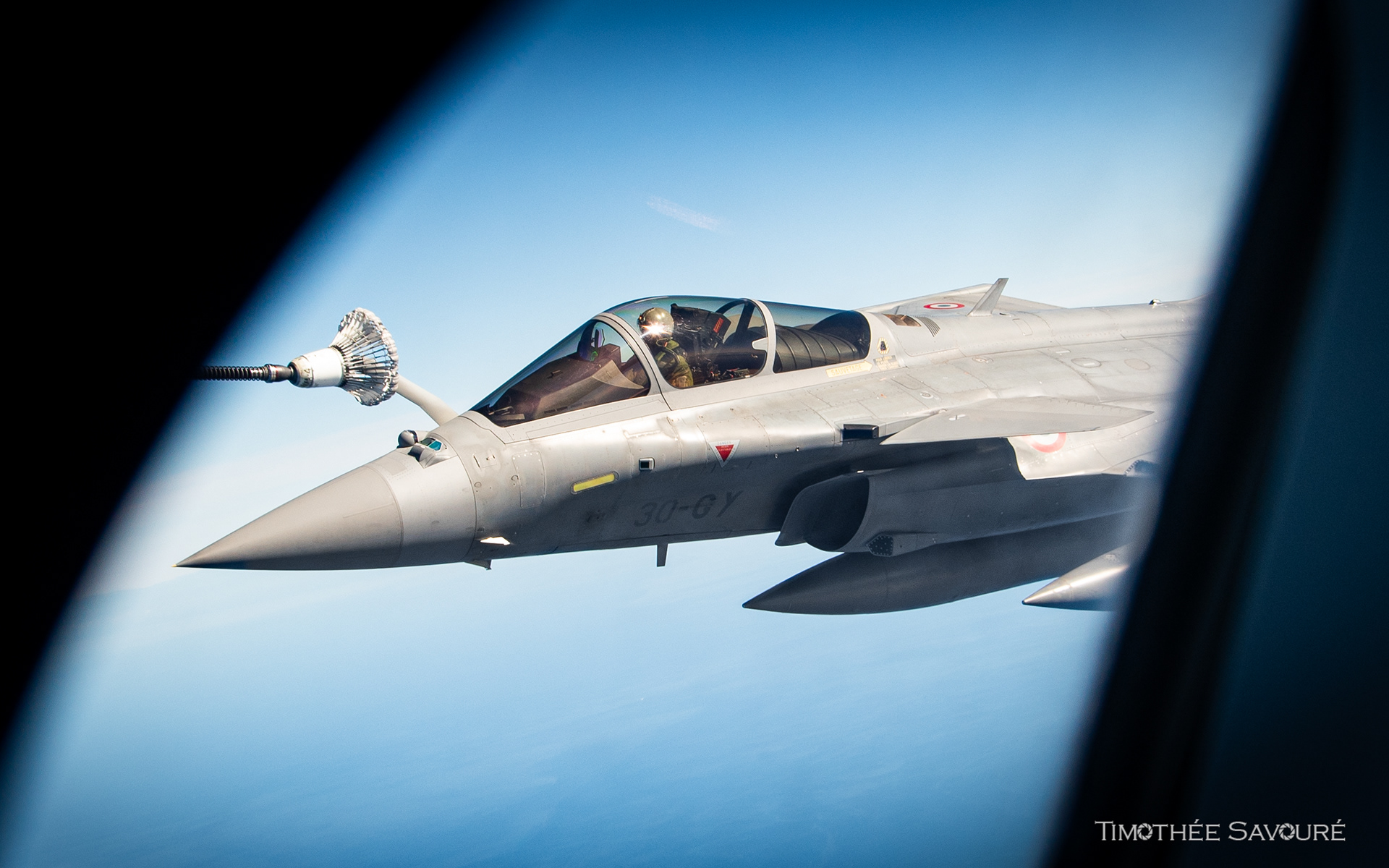
Armée de l'Air Dassault Rafale C | EC 1/30 Normandie-Niemen | C146 30-GY
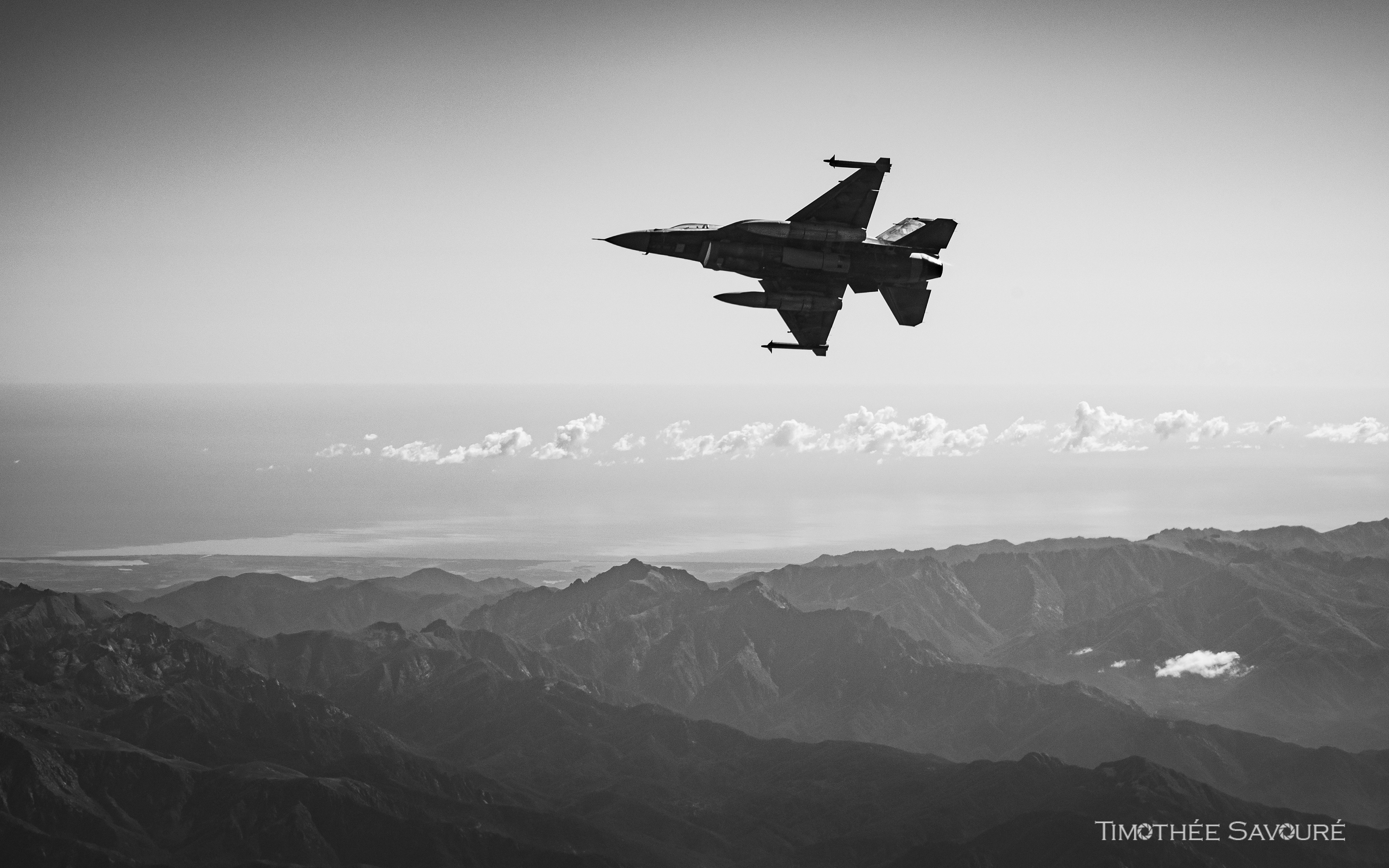
Hellenic Air Force F-16D over Corsica | 337 Mira | 610
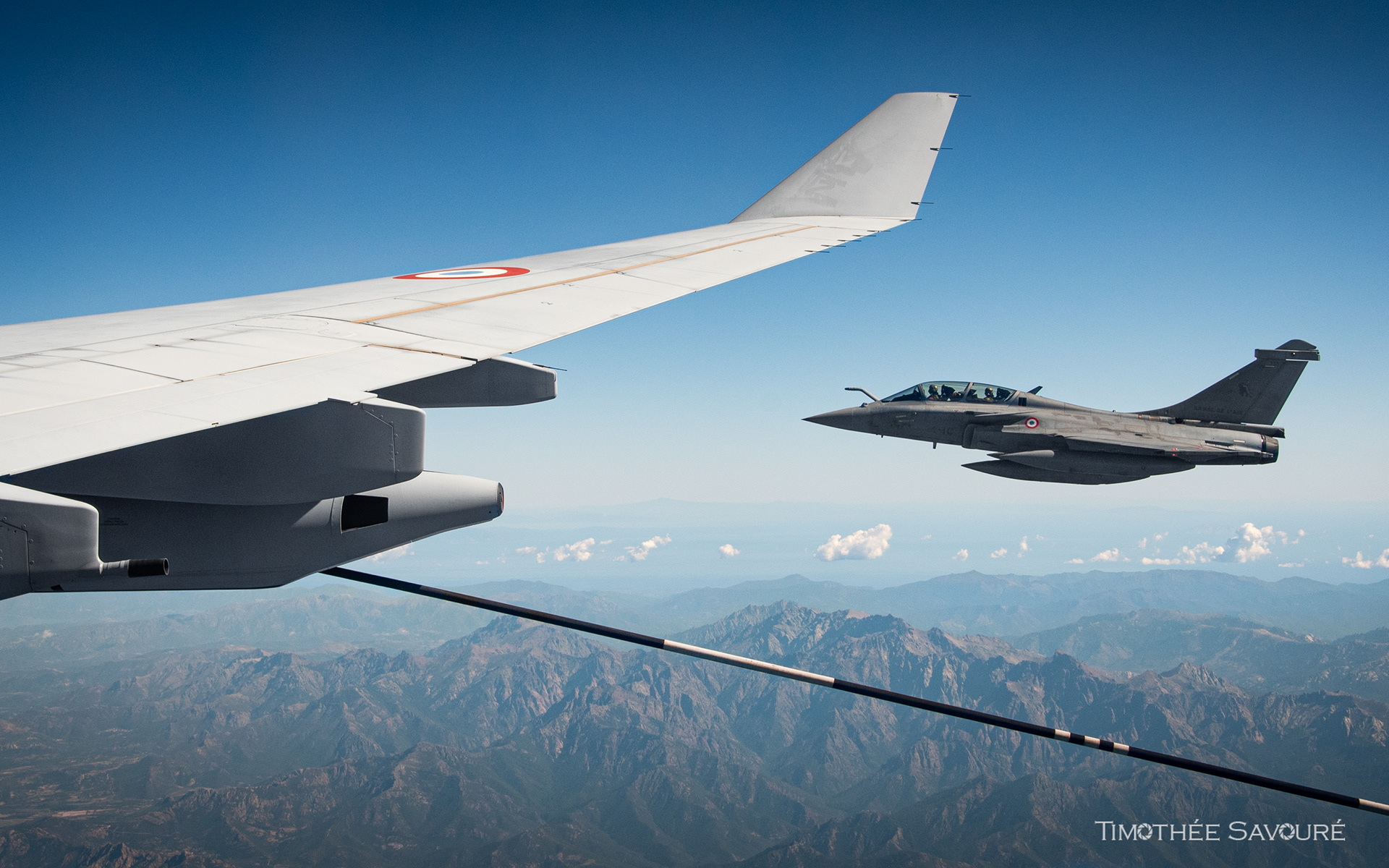
Armée de l'Air Dassault Rafale B | EC 2/4 Lafayette | 328 4-IC

Armée de l'Air Dassault Rafale C | EC 1/5 Vendée | 149 5-VB
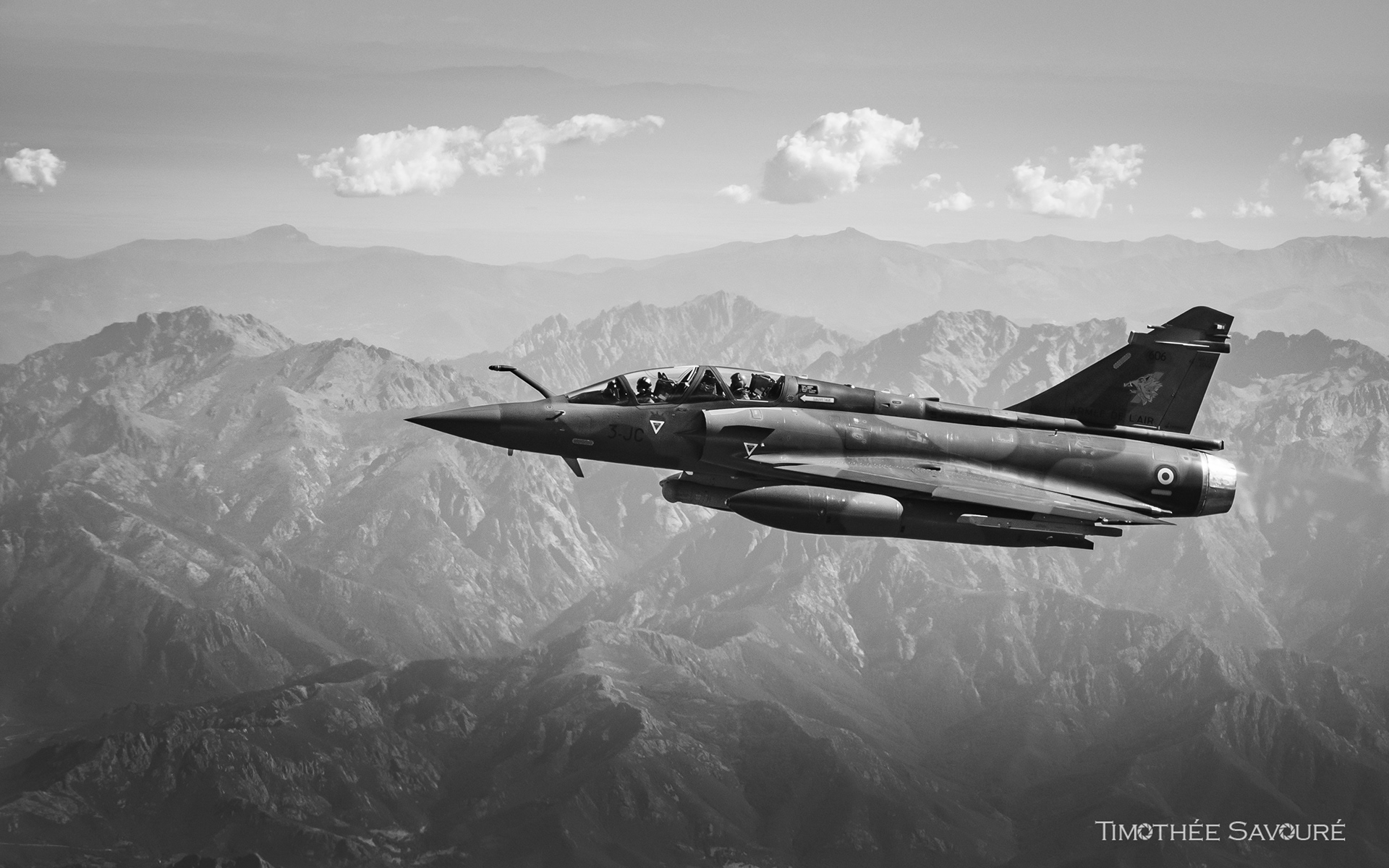
Armée de l'Air Dassault Mirage 2000D over Corsica | EC 3/3 Ardennes | 606 3-JC
